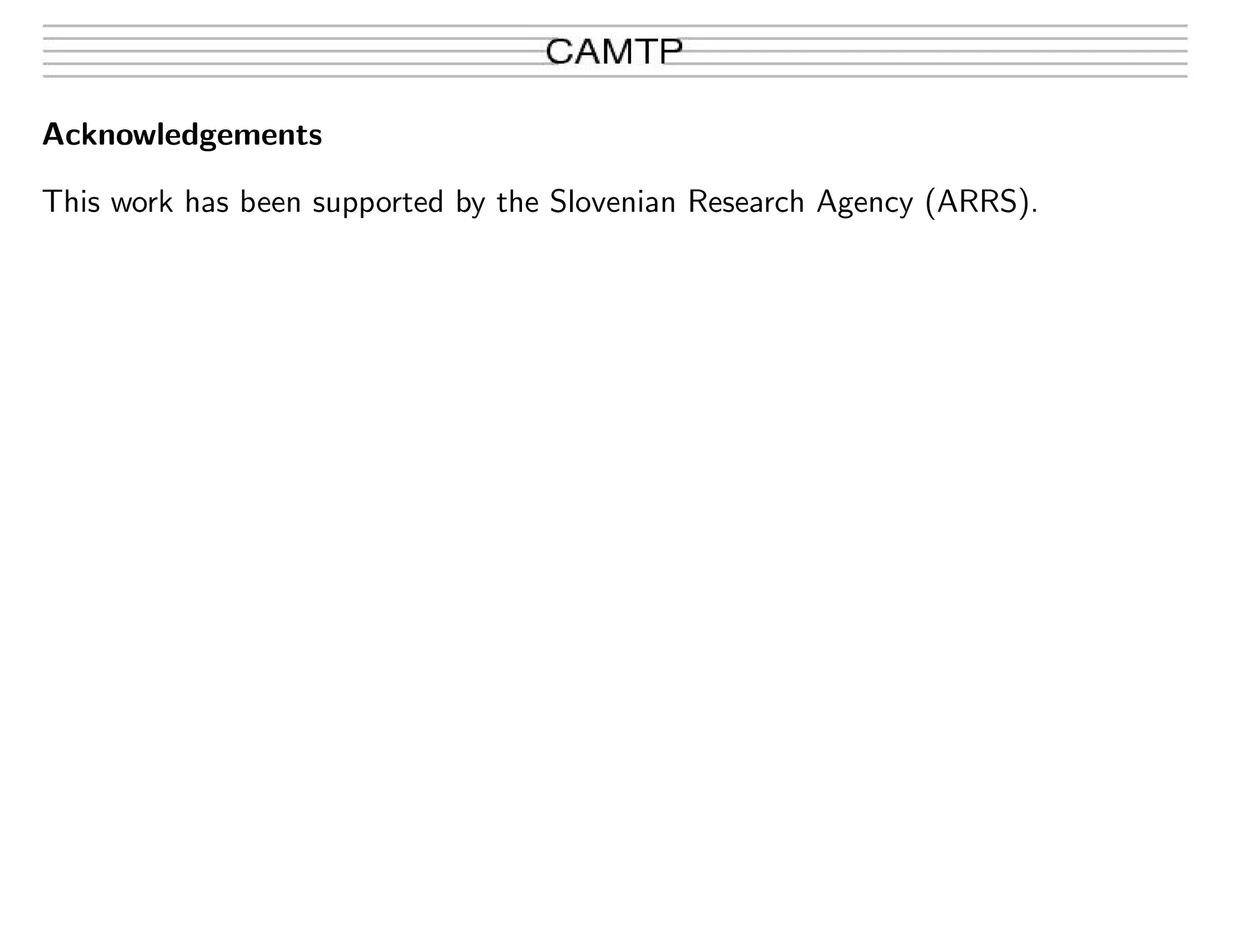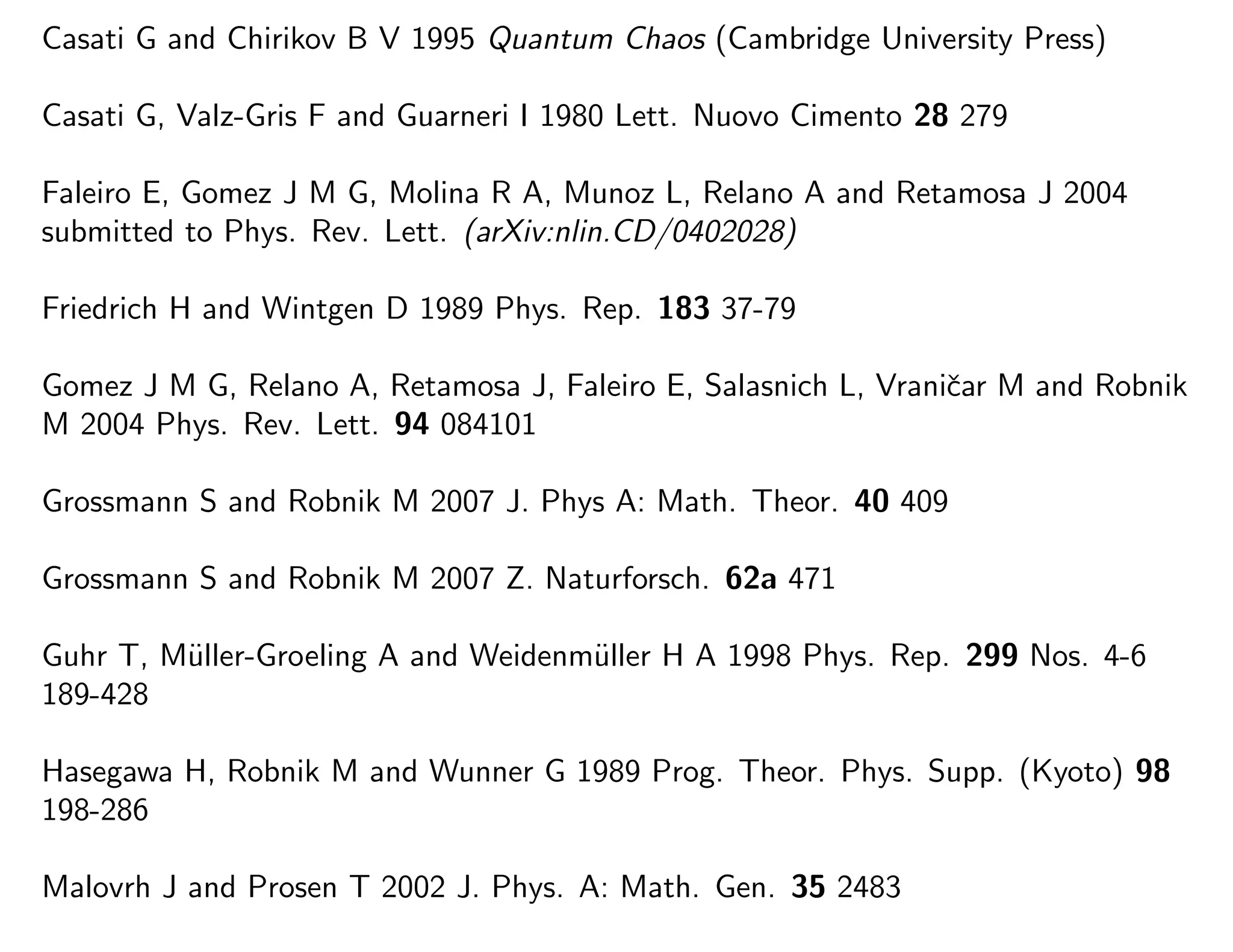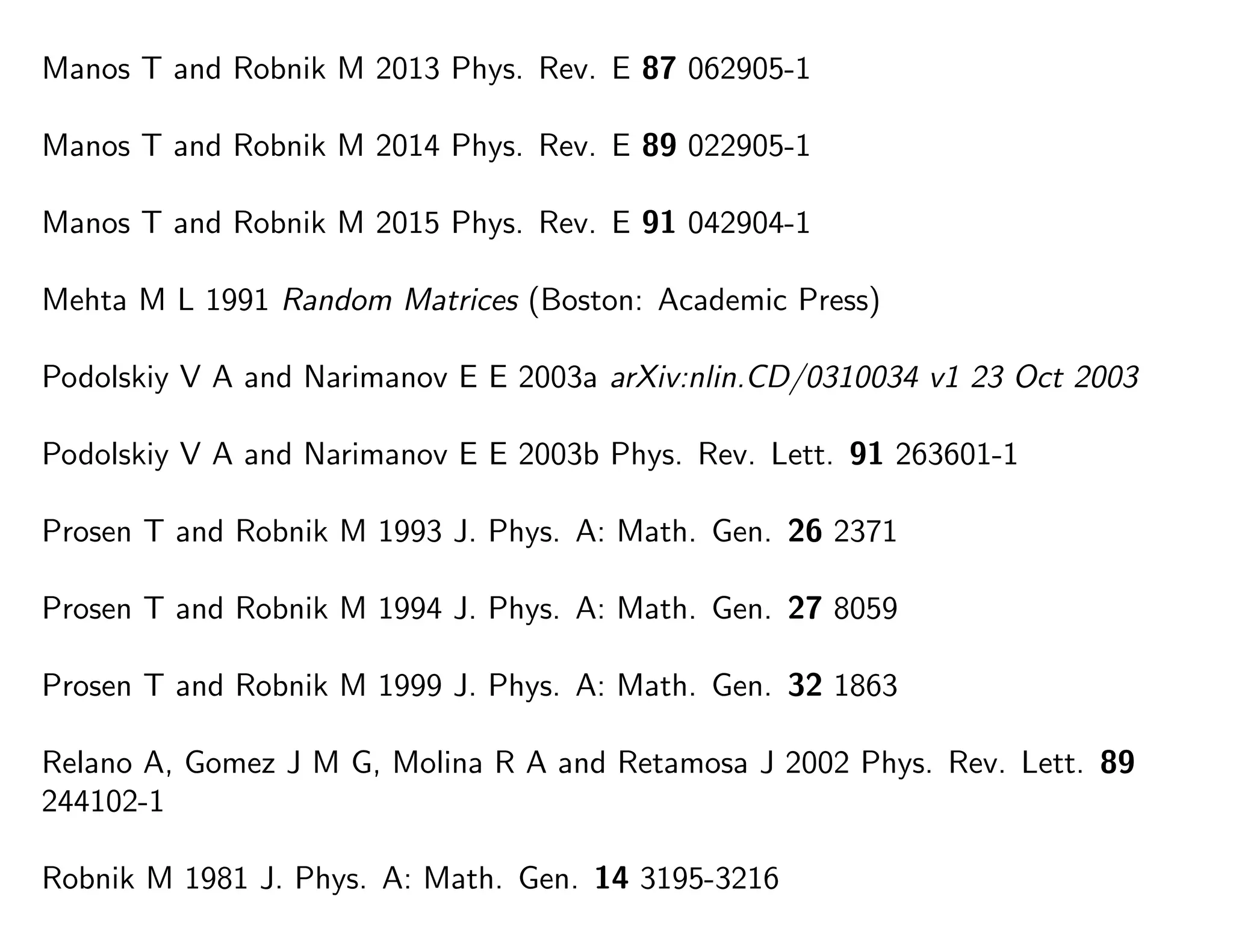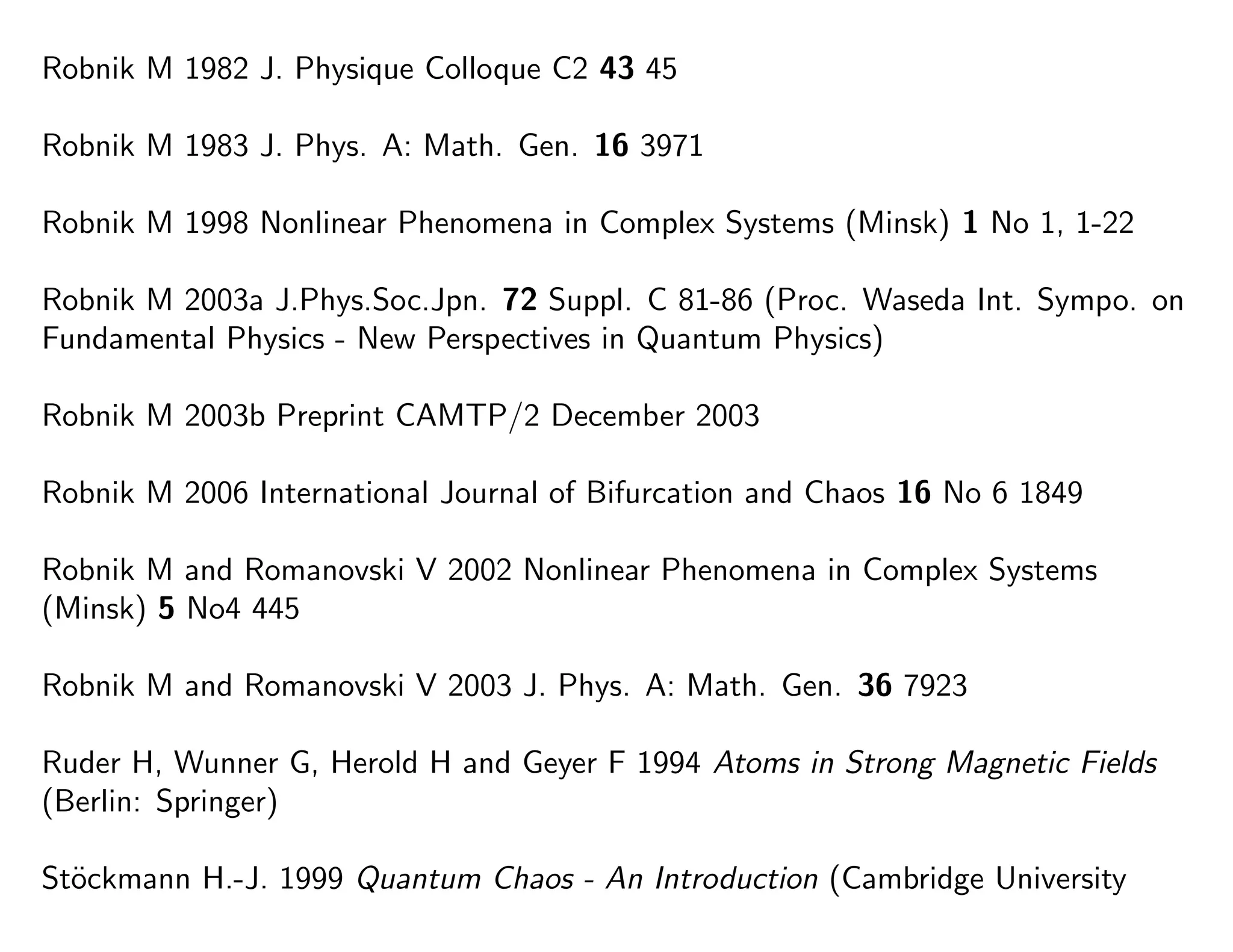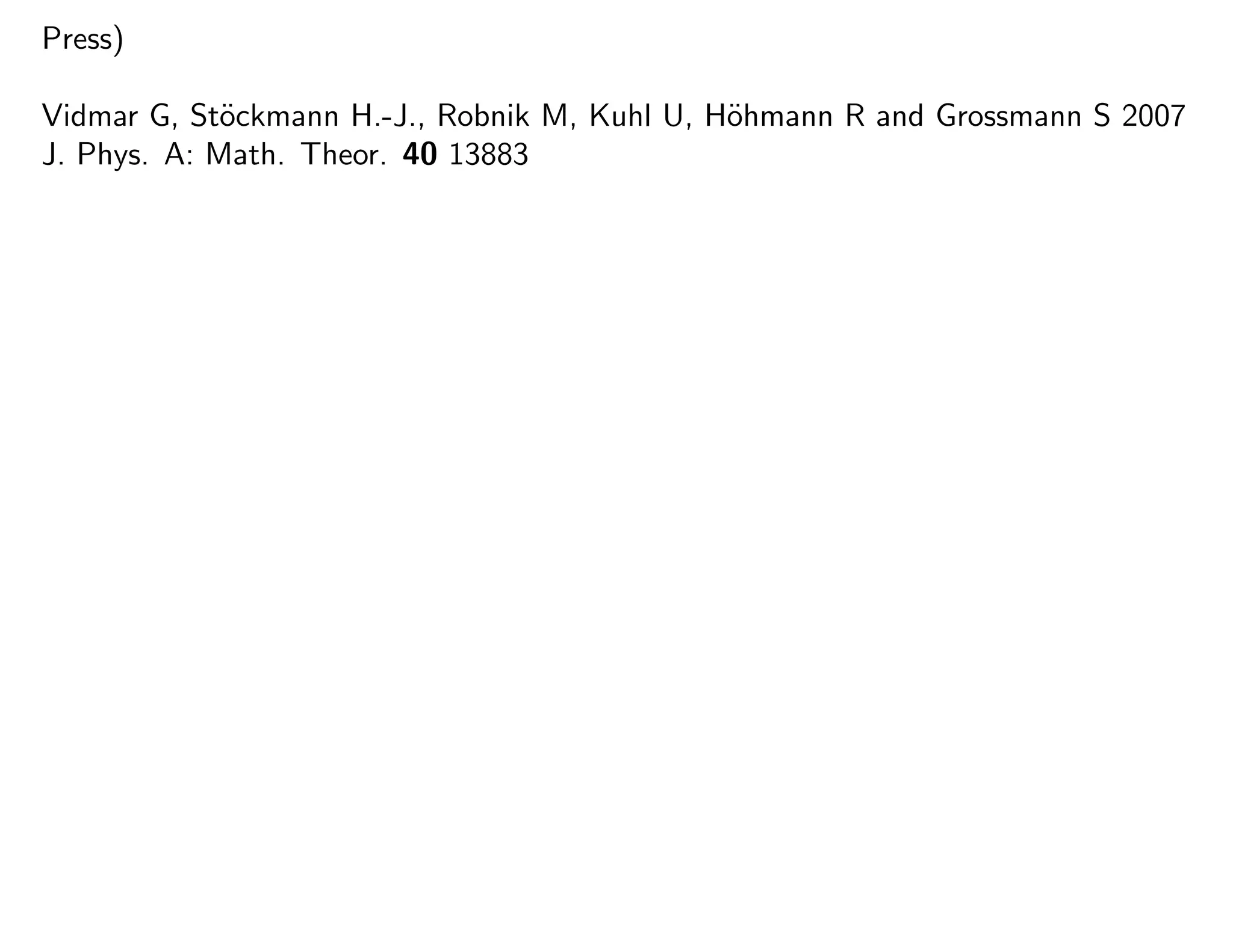This document summarizes research on quantum chaos, including the principle of uniform semiclassical condensation of Wigner functions, spectral statistics in mixed systems, and dynamical localization of chaotic eigenstates. It discusses how in the semiclassical limit, Wigner functions condense uniformly on classical invariant components. For mixed systems, the spectrum can be seen as a superposition of regular and chaotic level sequences. Localization effects can be observed if the Heisenberg time is shorter than the classical diffusion time. The document presents an analytical formula called BRB that describes the transition between Poisson and random matrix statistics. An example is given of applying this to analyze the level spacing distribution for a billiard system.
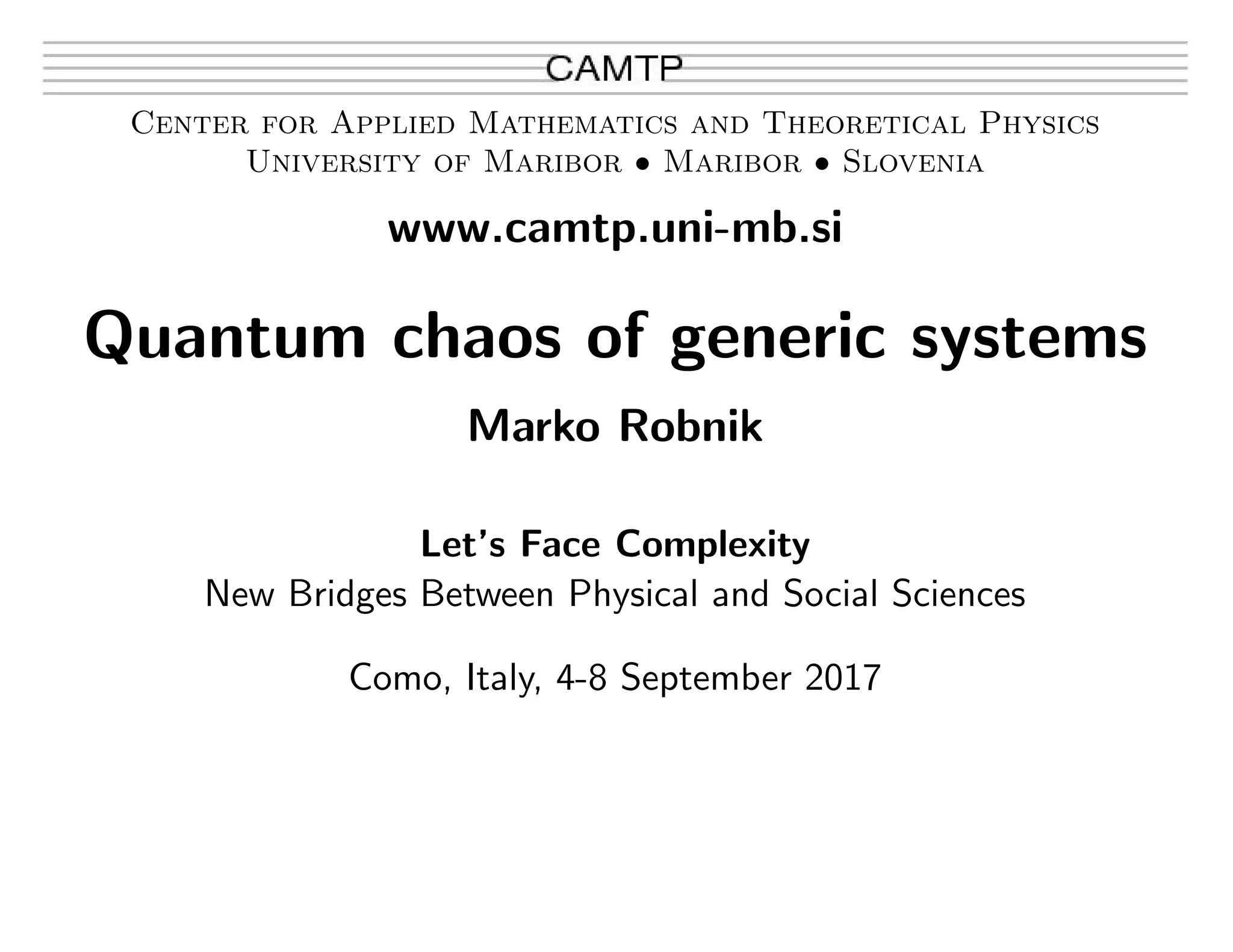
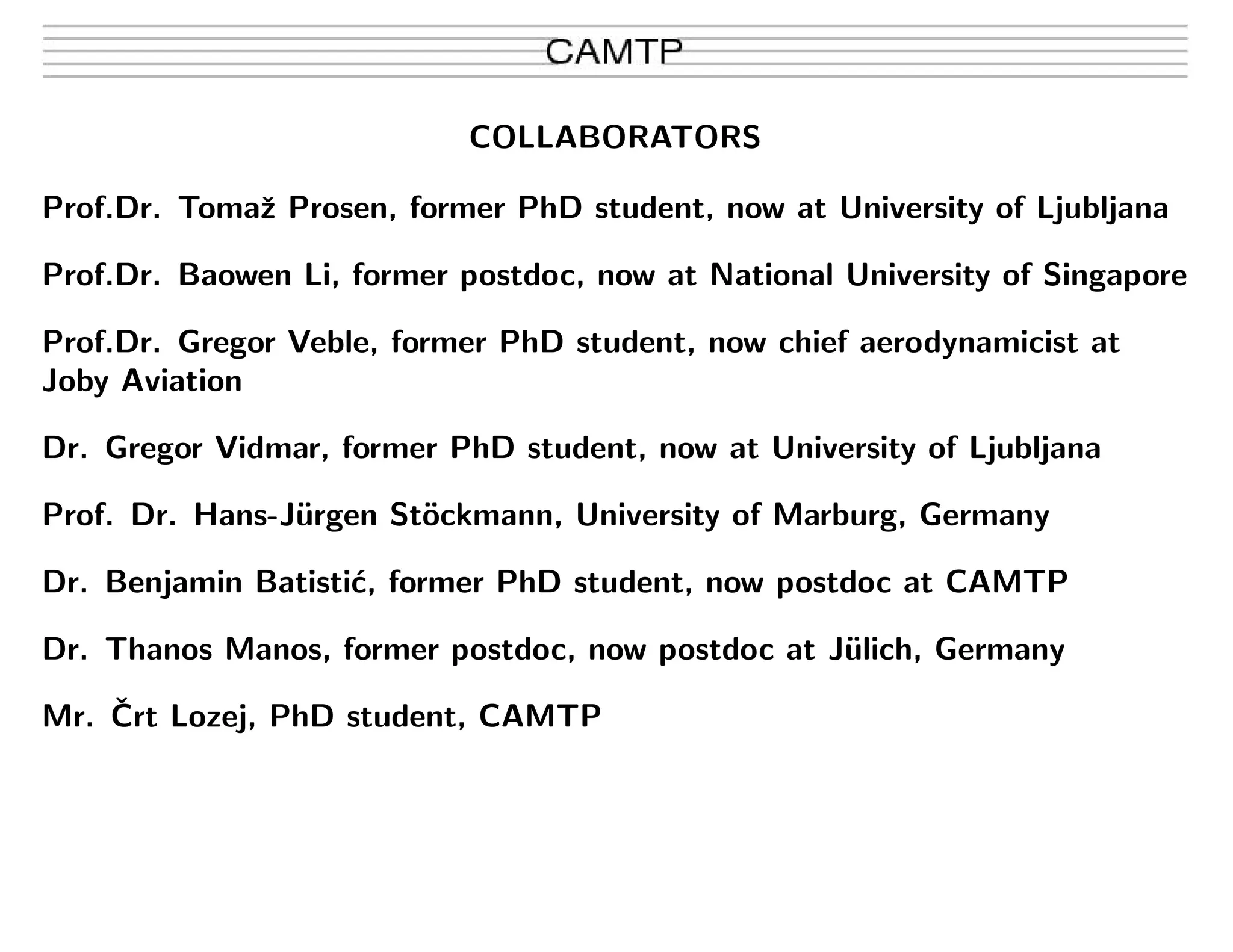
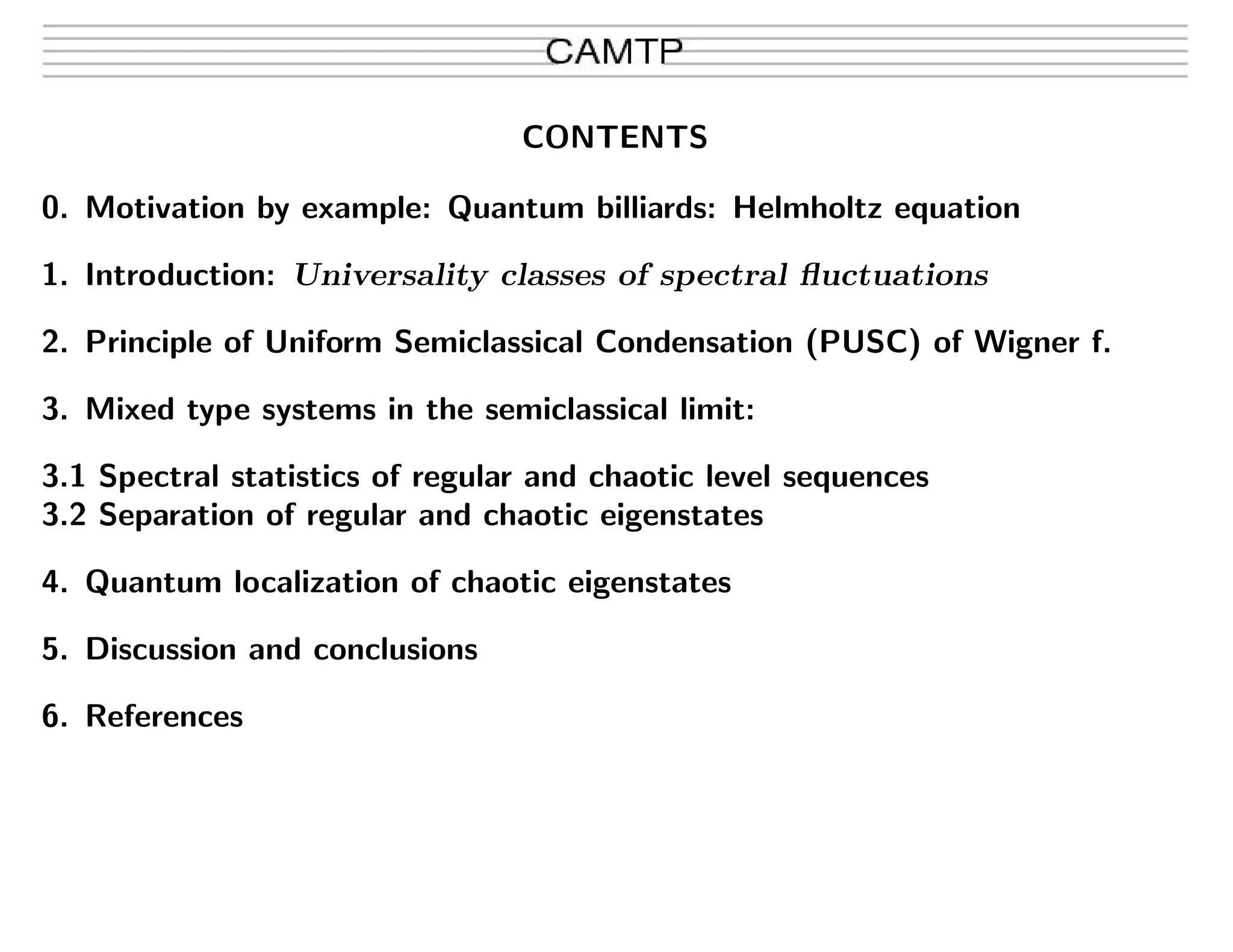
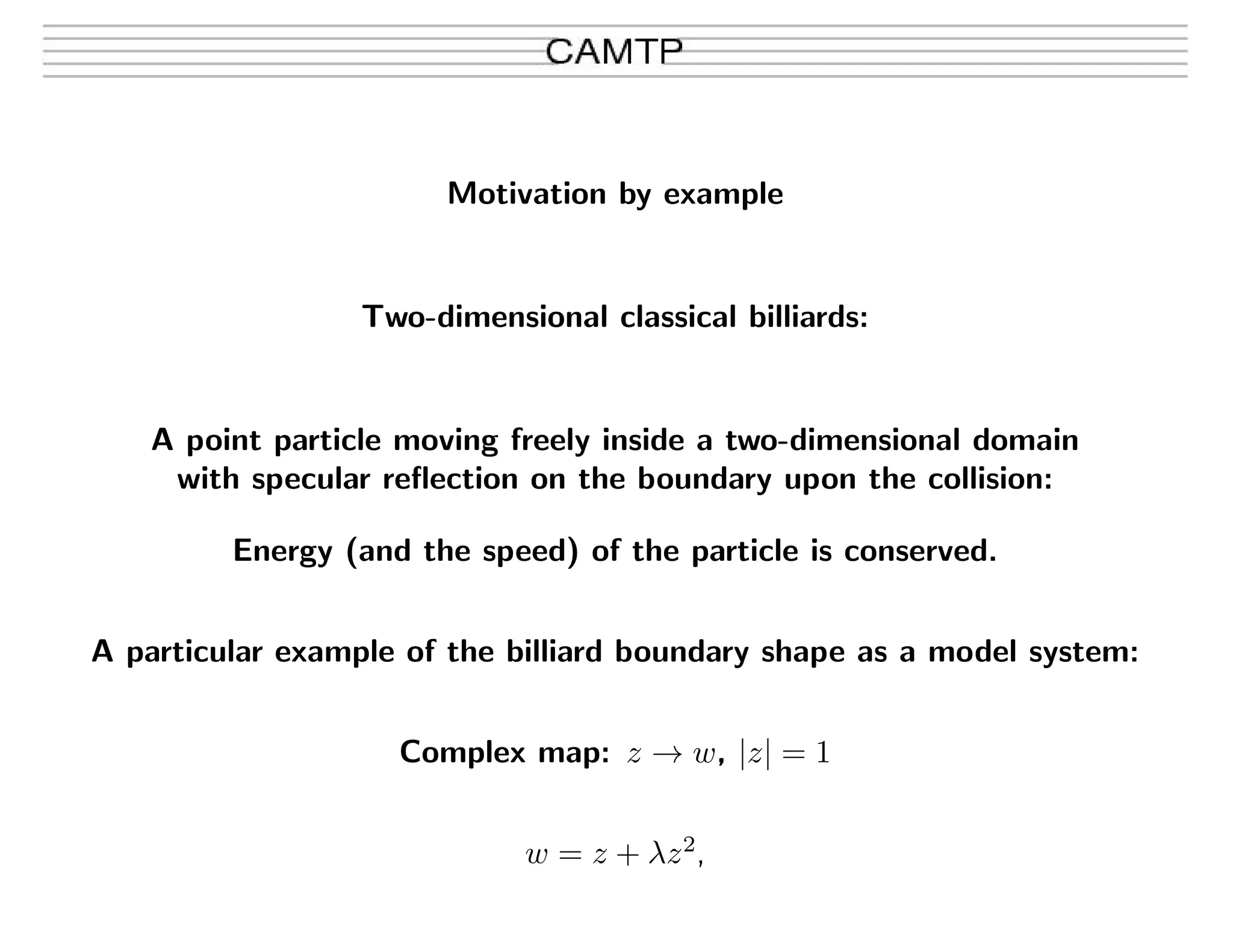
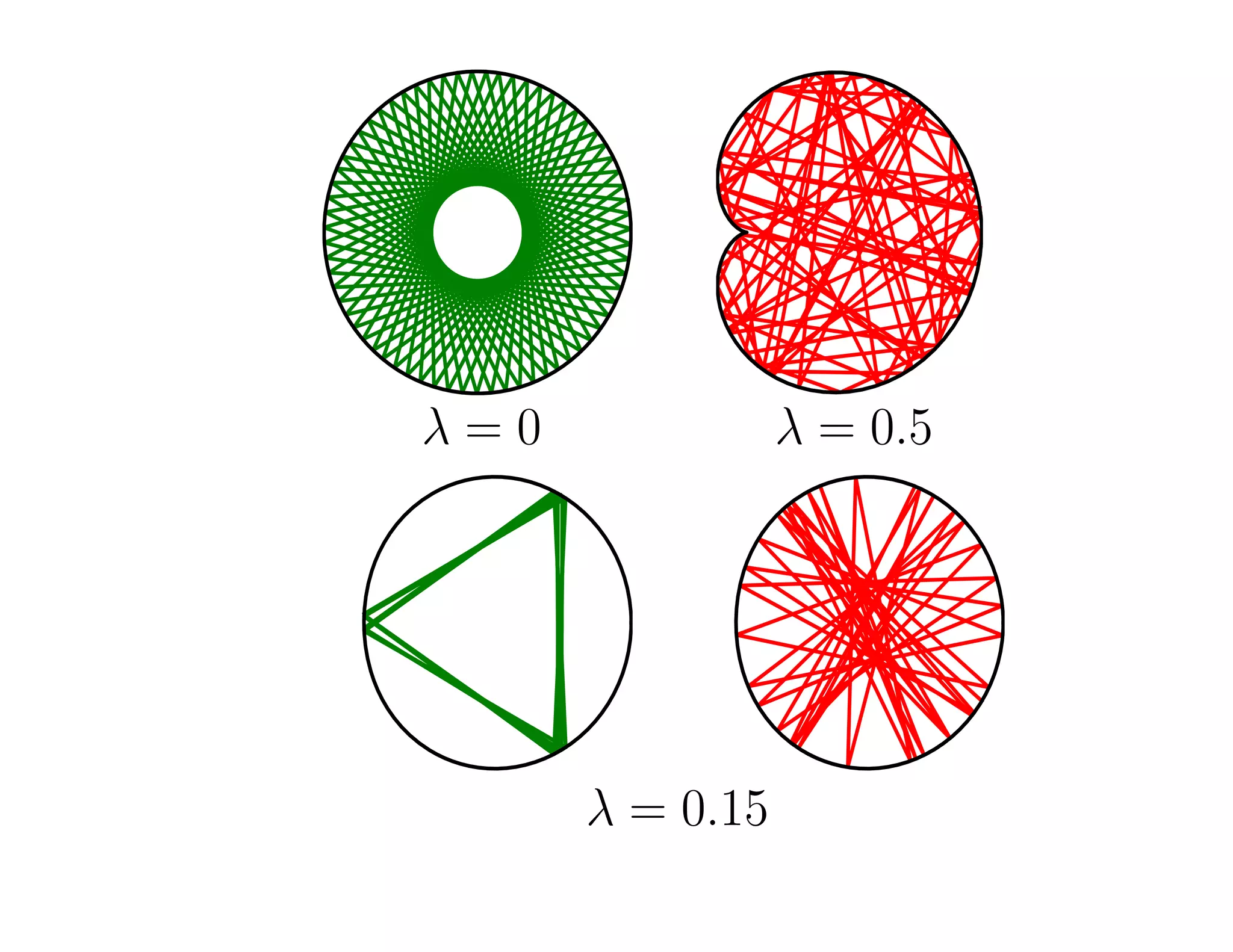

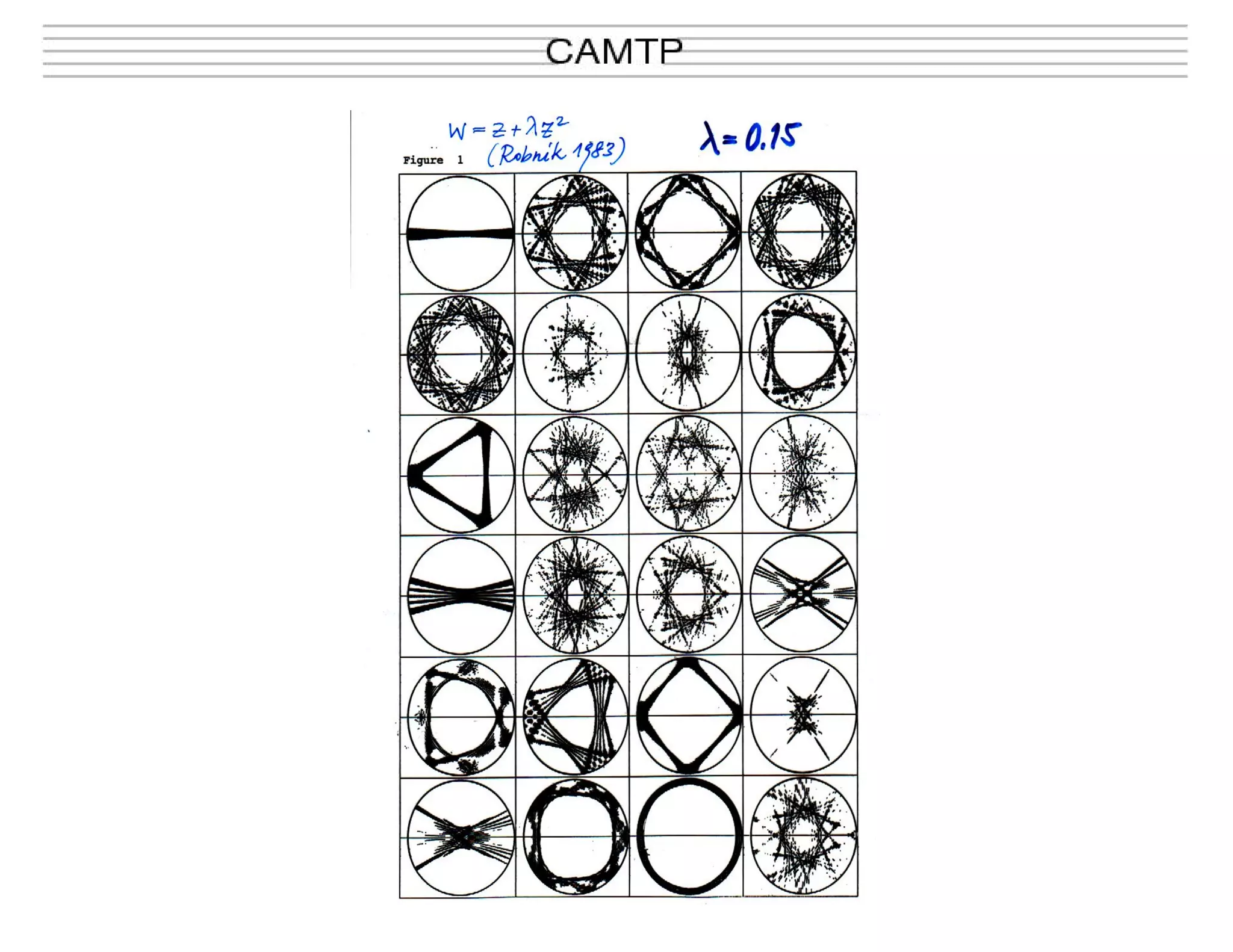
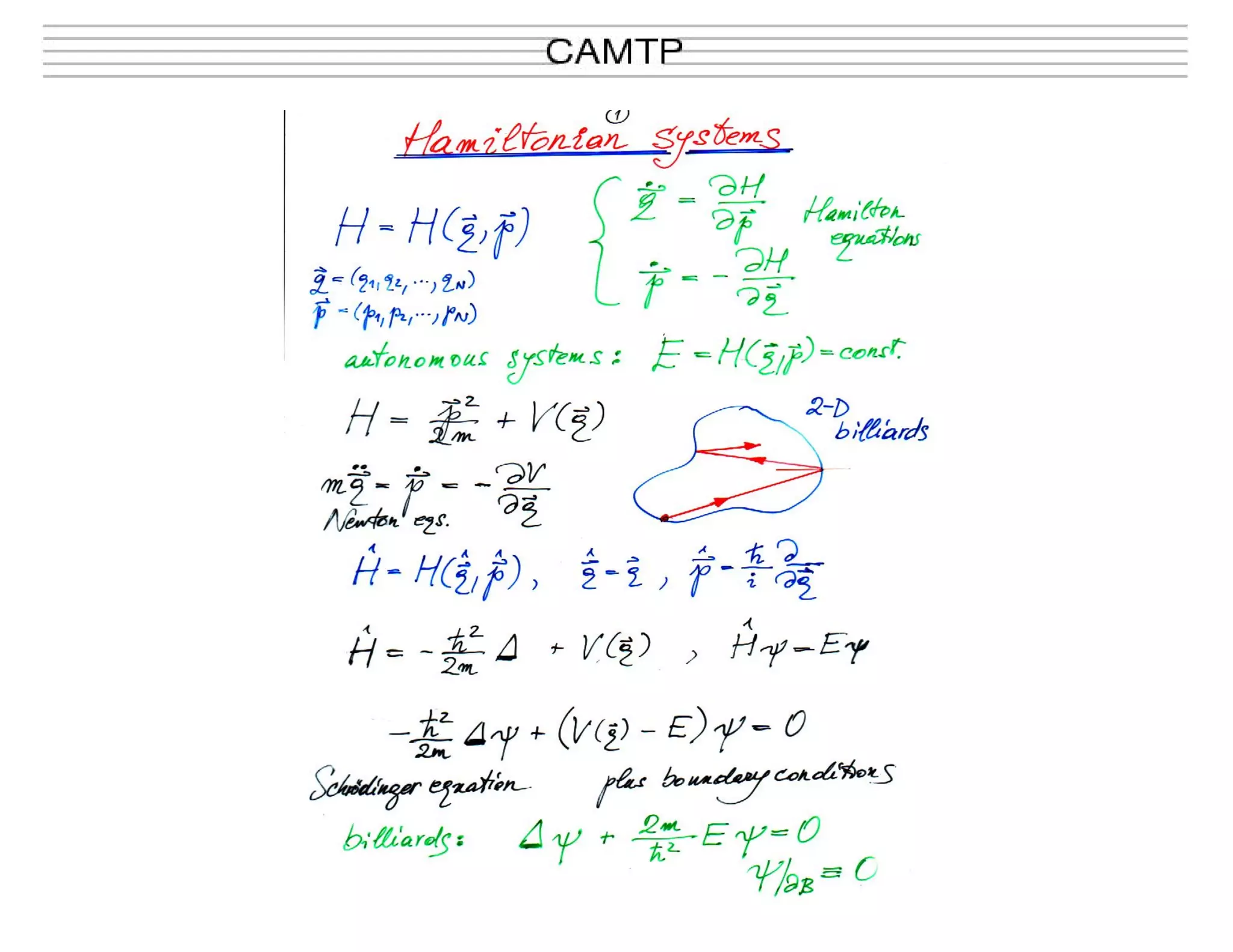
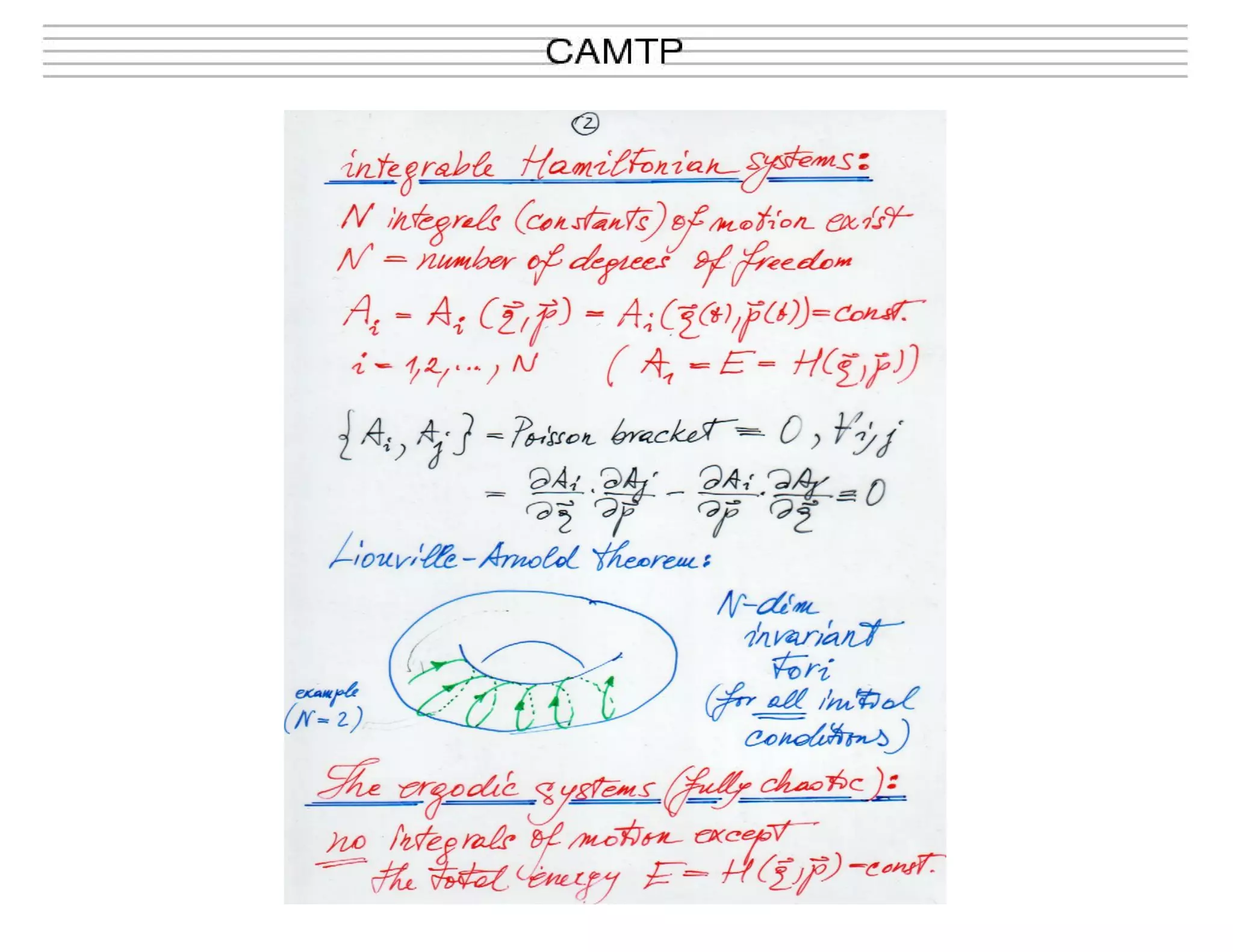
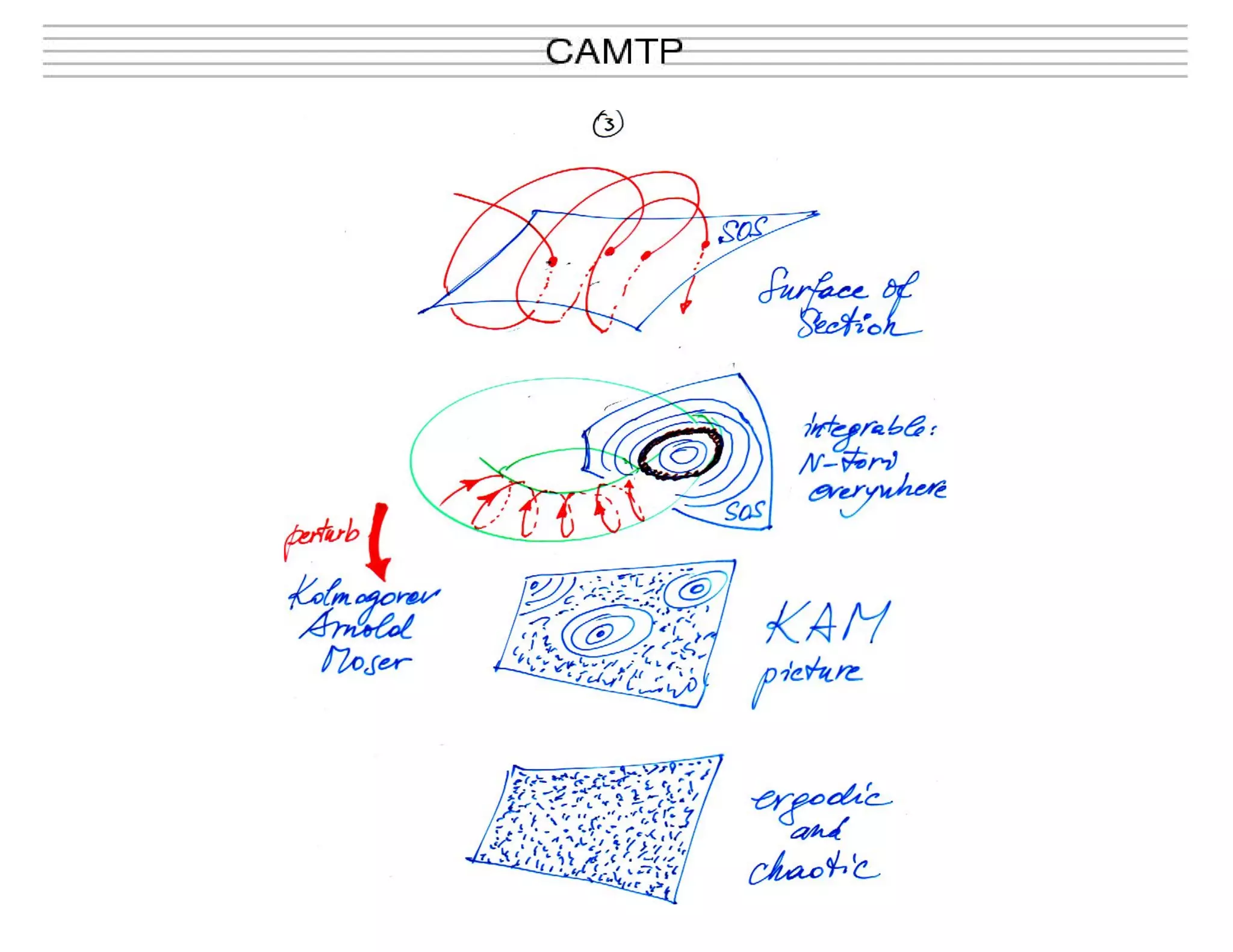
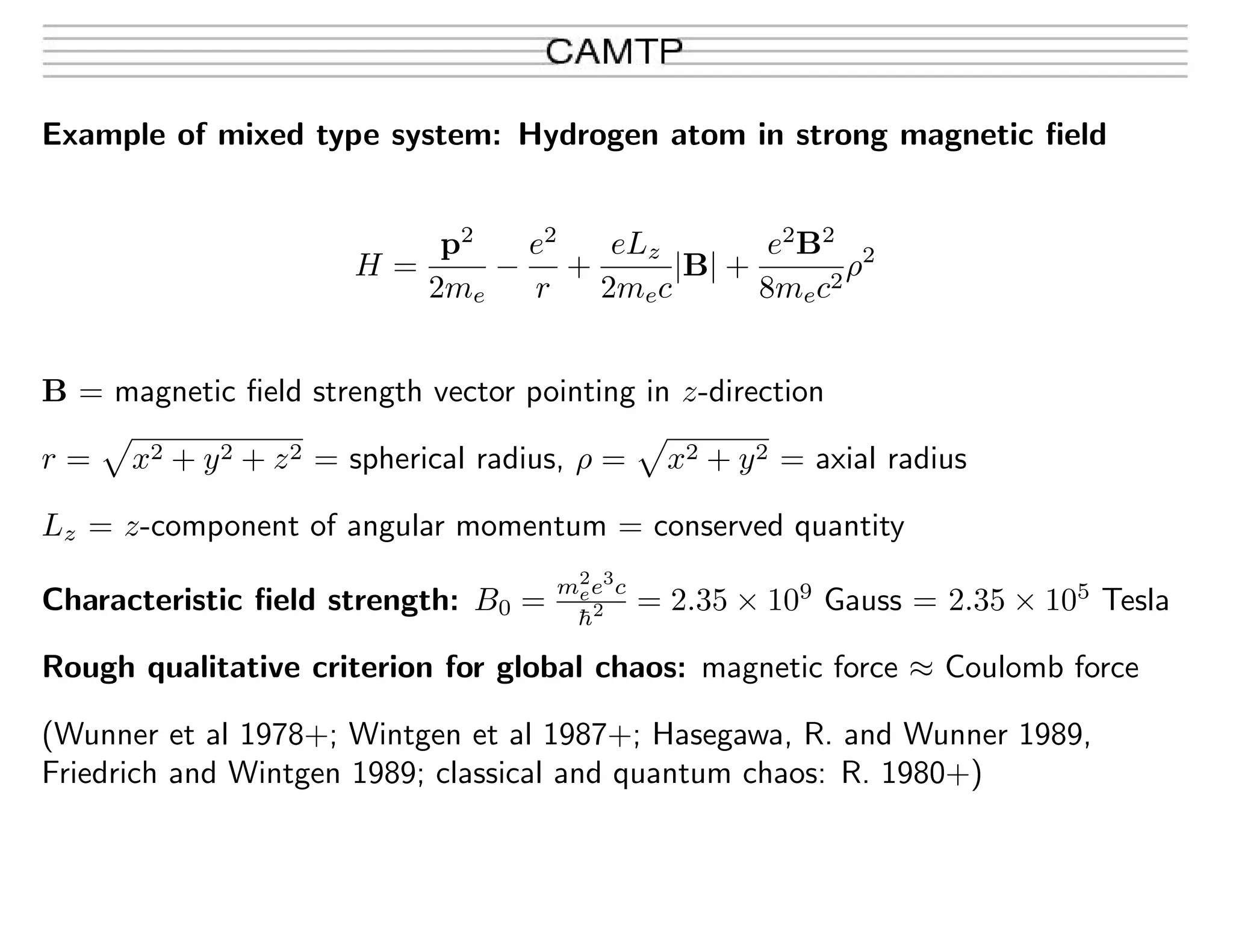
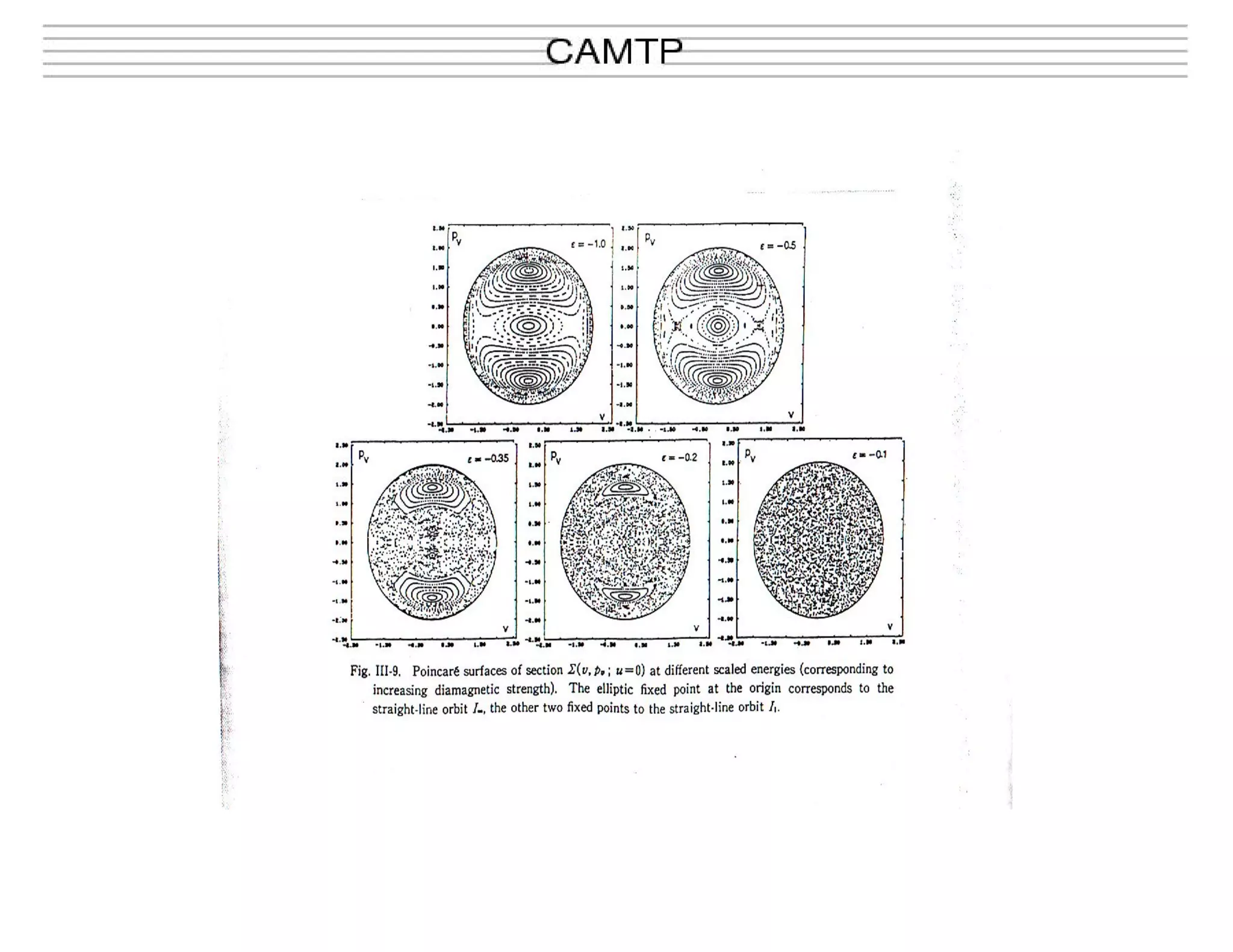

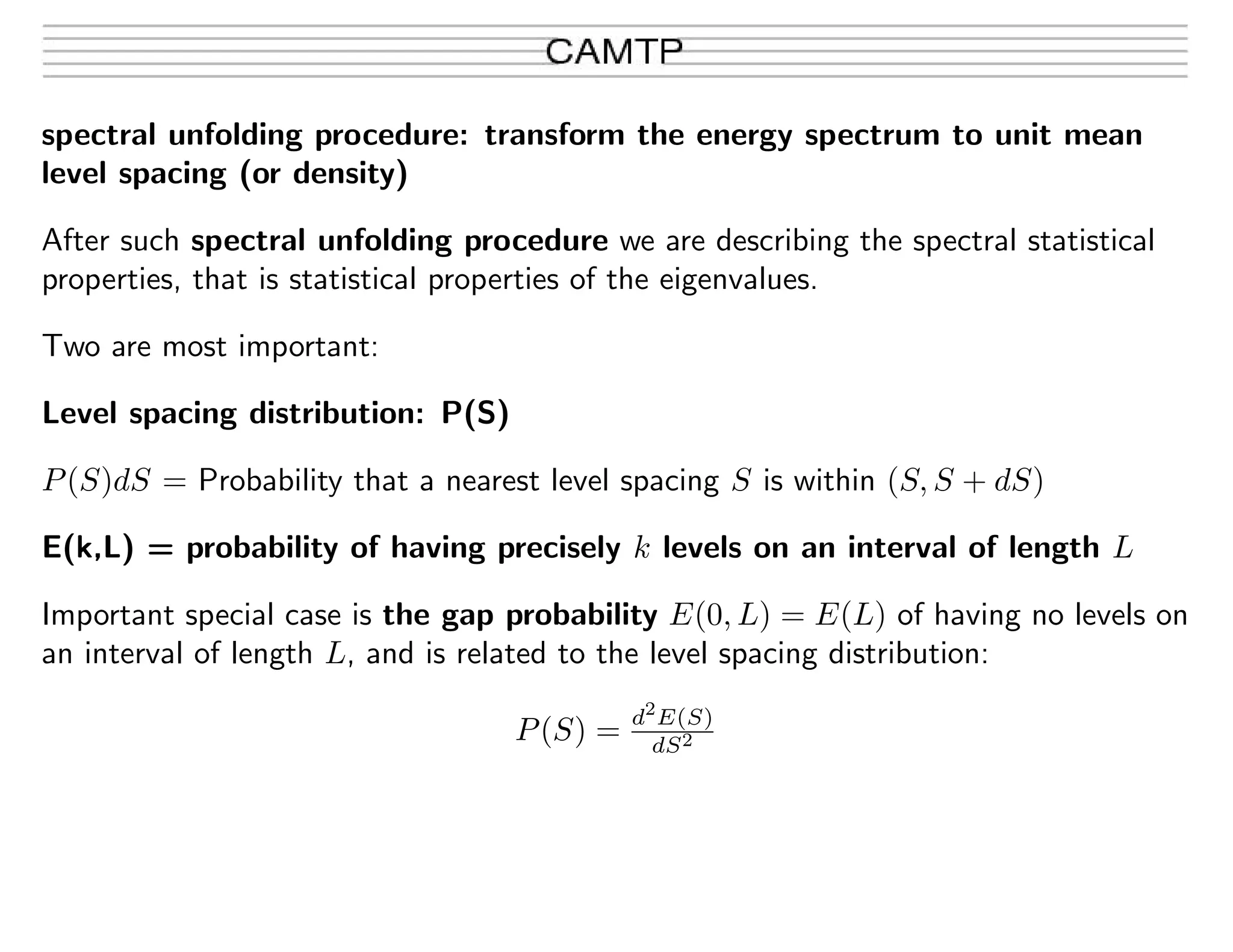
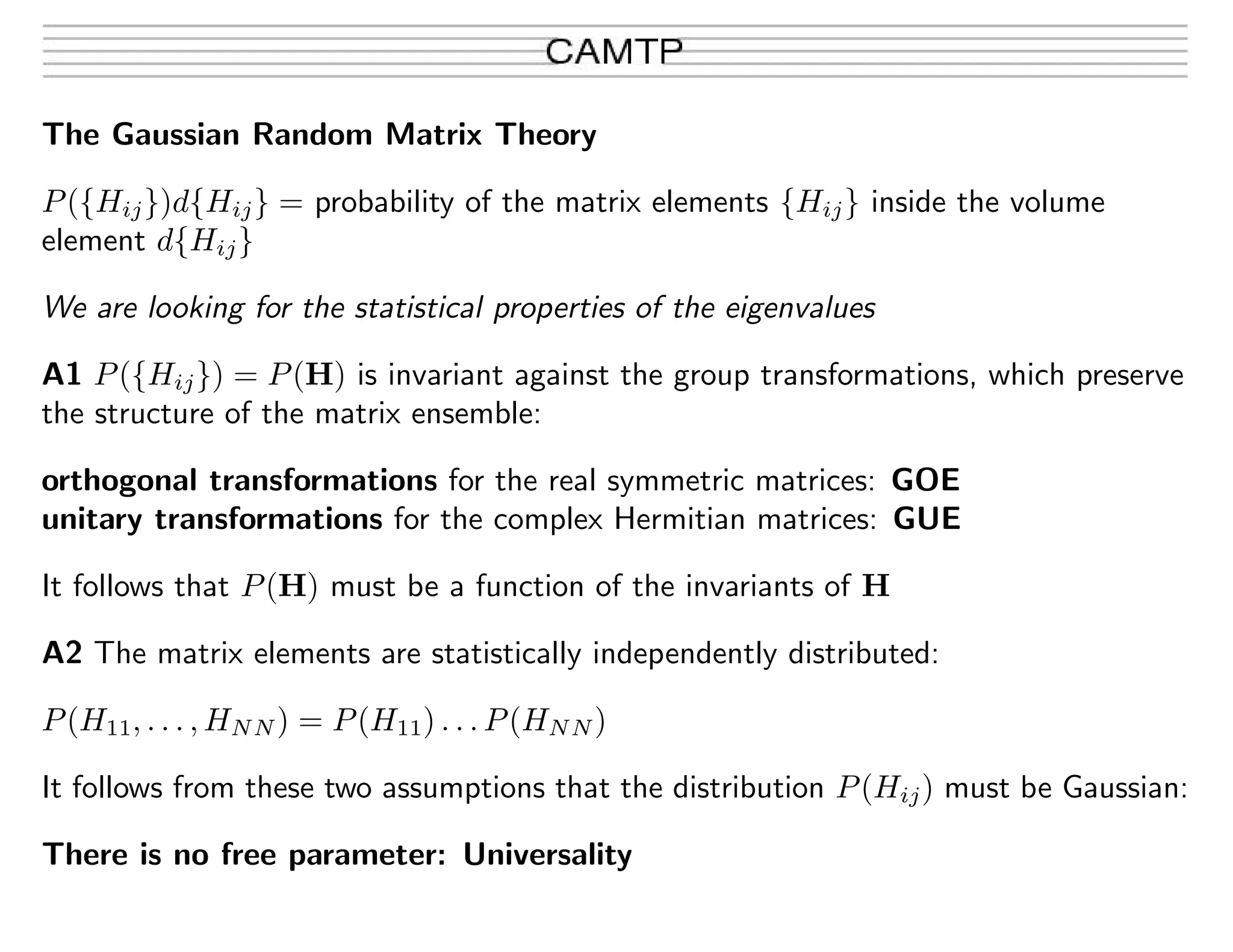
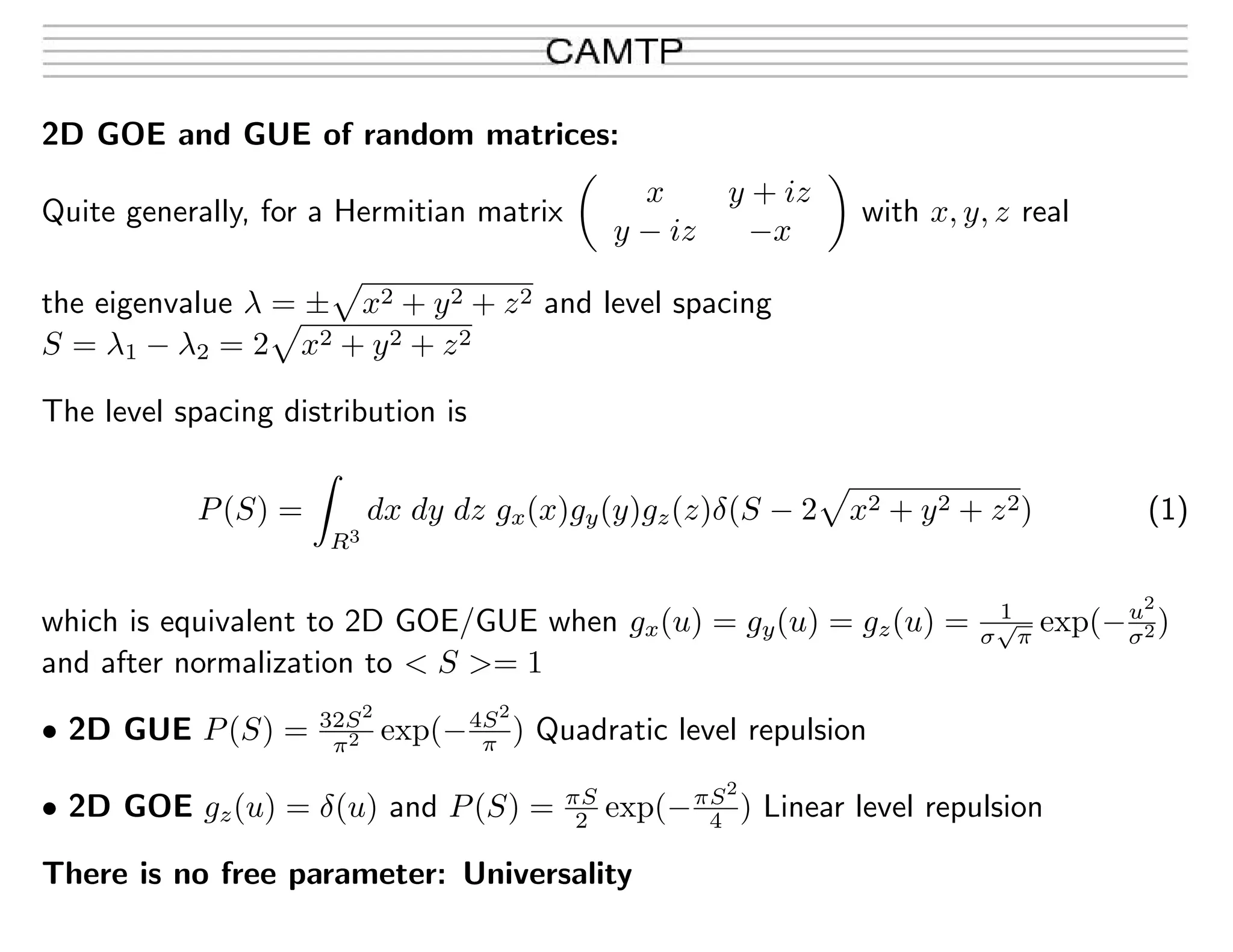
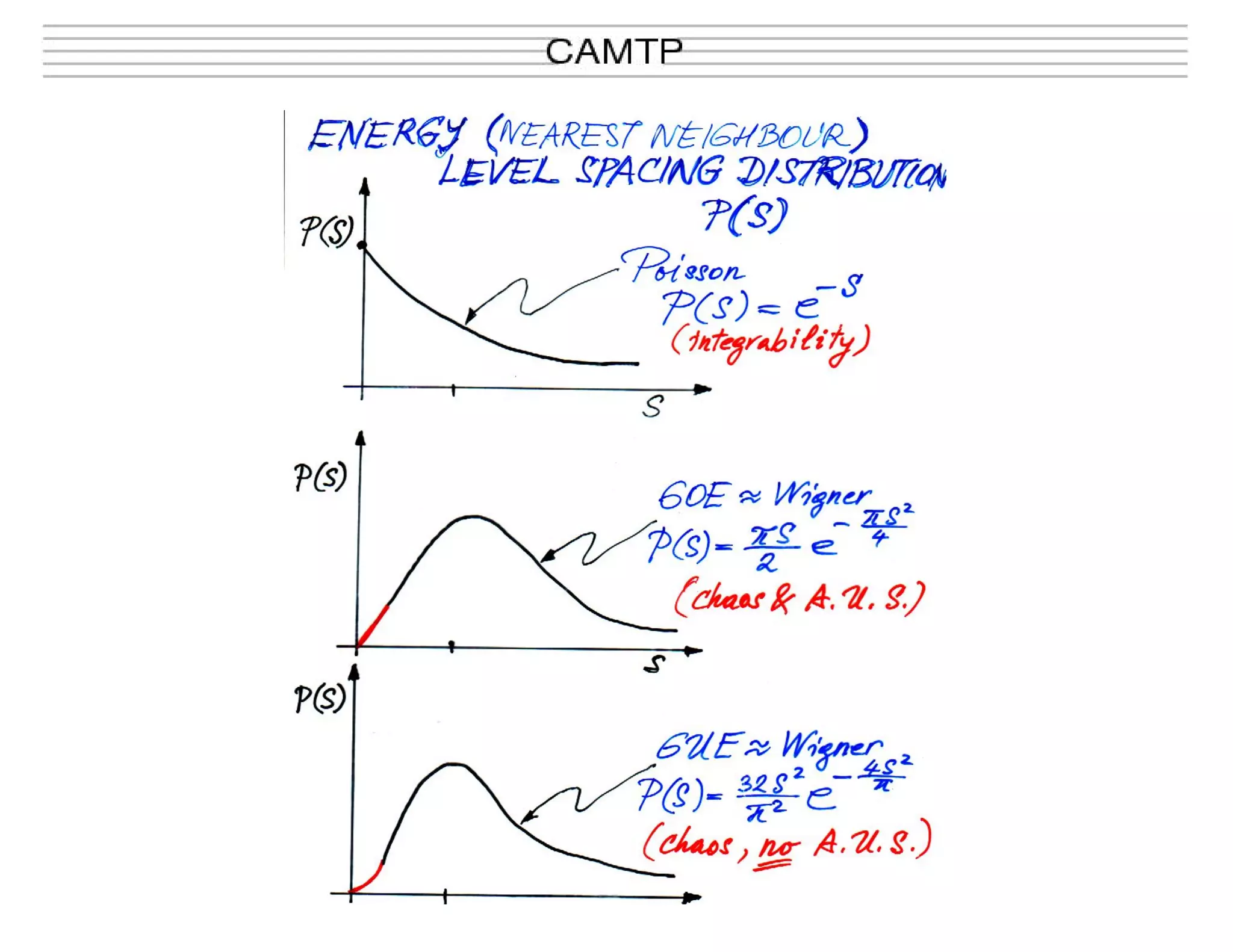
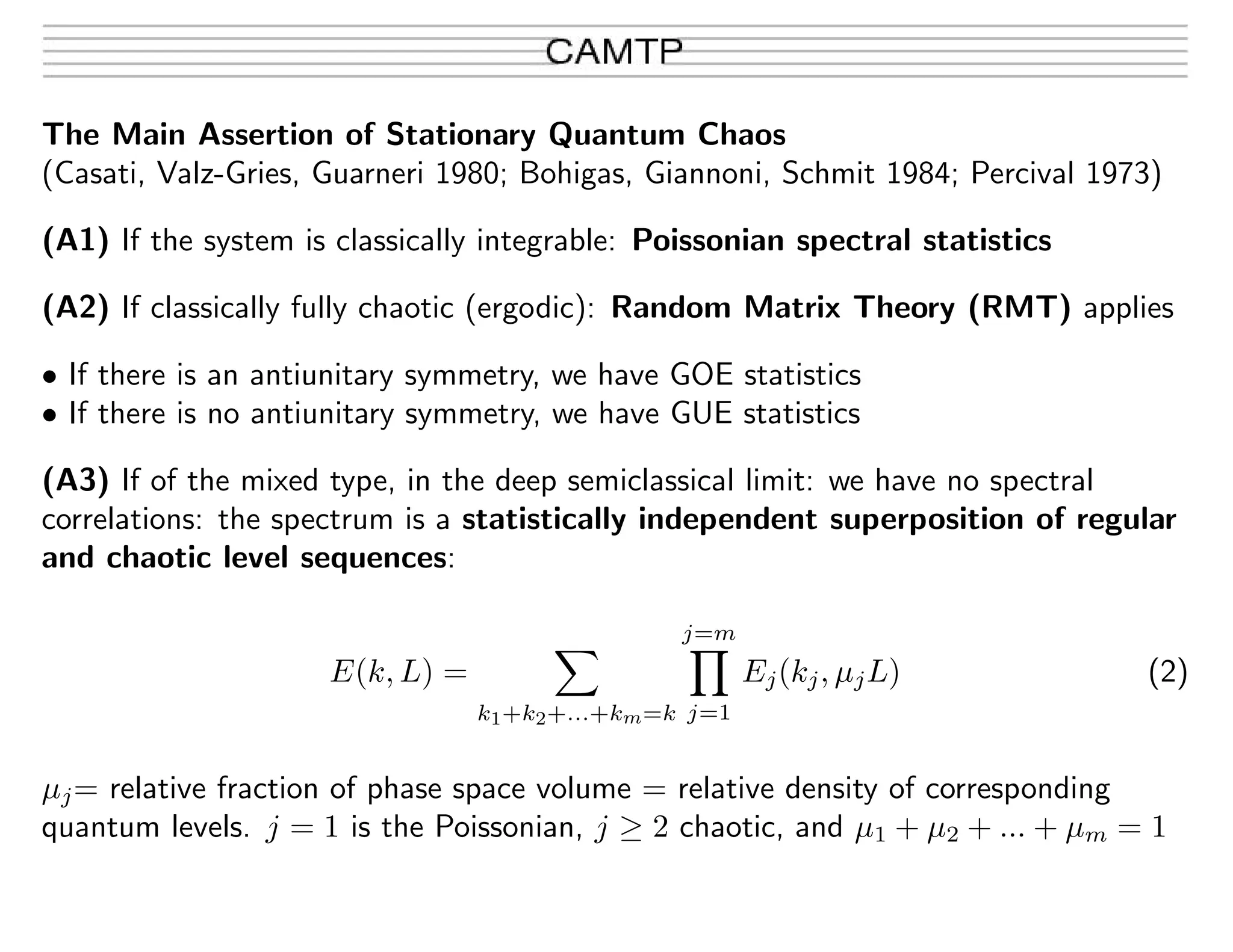
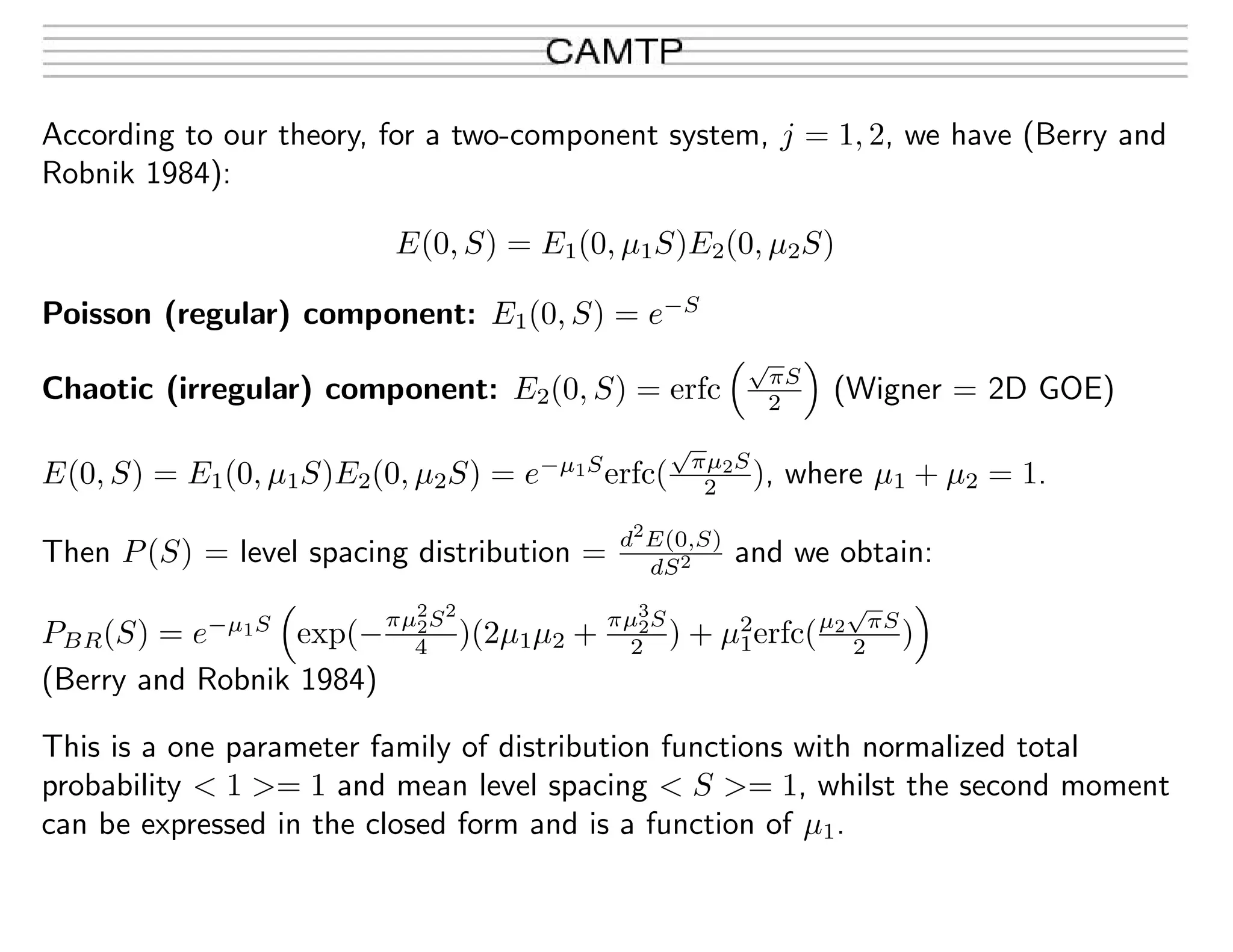

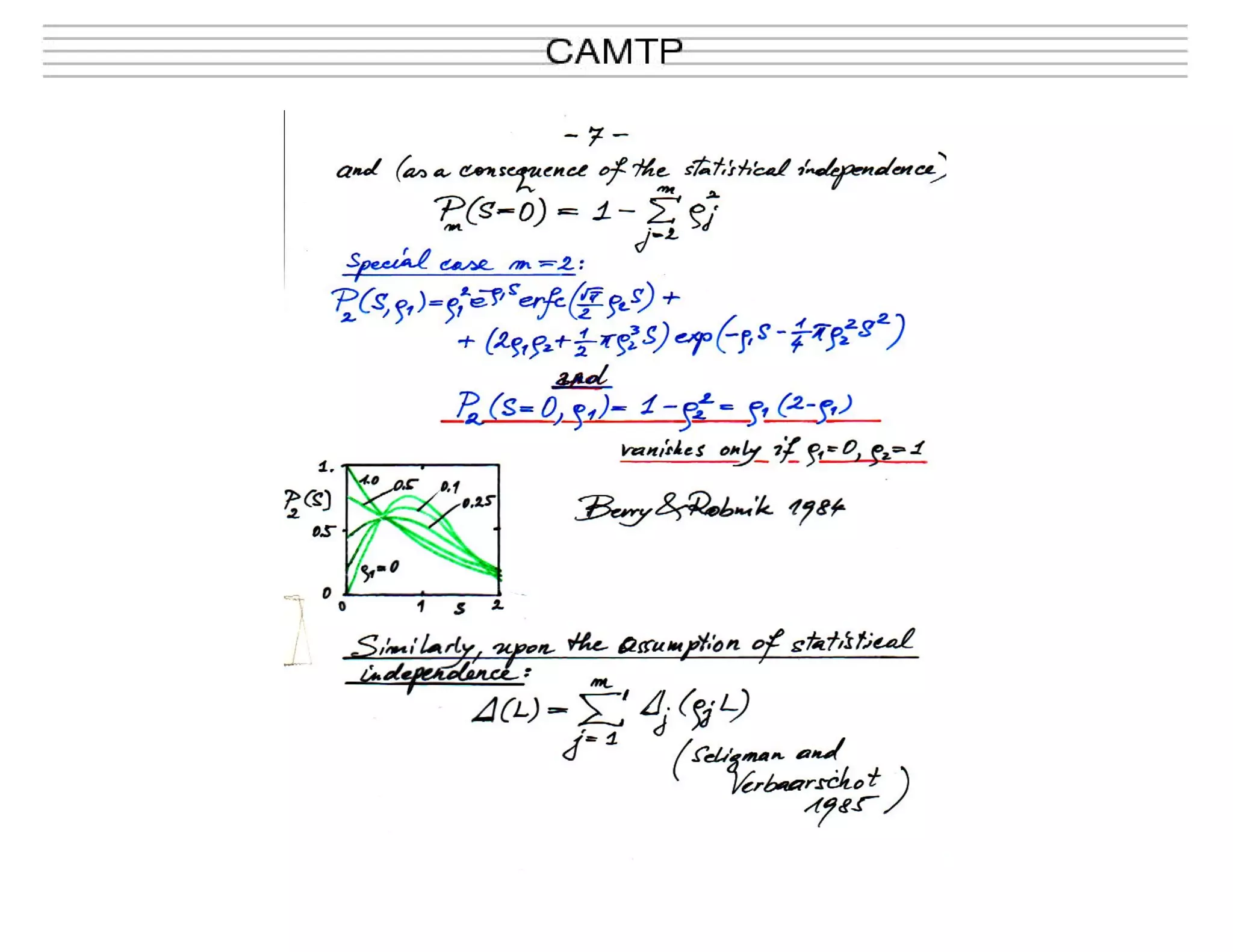
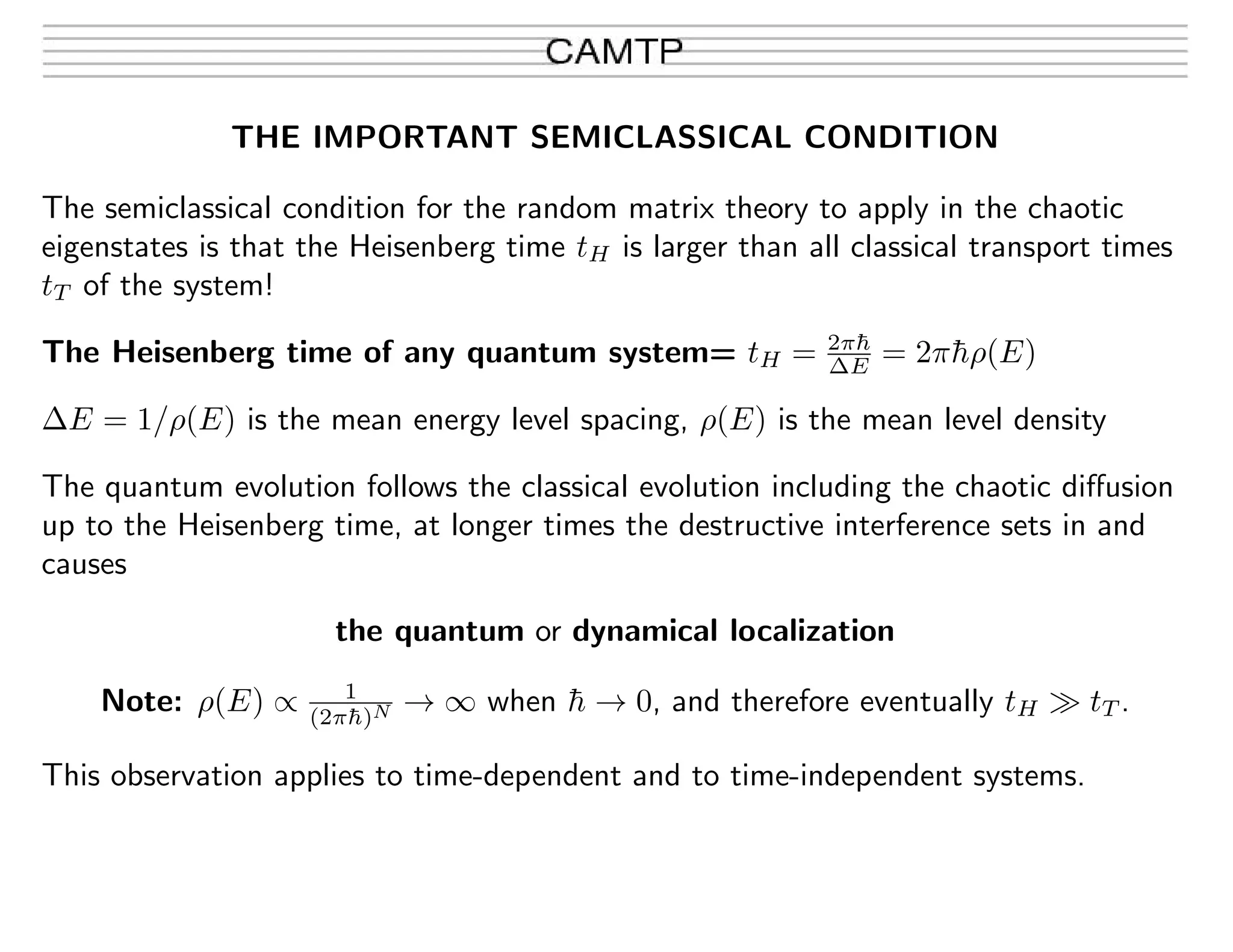
![We show the second moment p2
averaged over an ensemble of 106
initial
conditions uniformly distributed in the chaotic component on the interval
s ∈ [0, L/2] and p = 0.. We see that the saturation value of p2
is reached at about
NT = 105
collisions for λ = 0.15, NT = 103
collisions for λ = 0.20 and NT = 102
for
λ = 0.25. For λ = 0.15, according to the criterion at k = 2000 and k = 4000, we are
still in the regime where the dynamical localization is expected. On the other hand,
for λ = 0.20, 0.25 we expect extended states already at k < 2000.](https://image.slidesharecdn.com/como2017robnik-171031164920/75/Quantum-chaos-of-generic-systems-Marko-Robnik-23-2048.jpg)
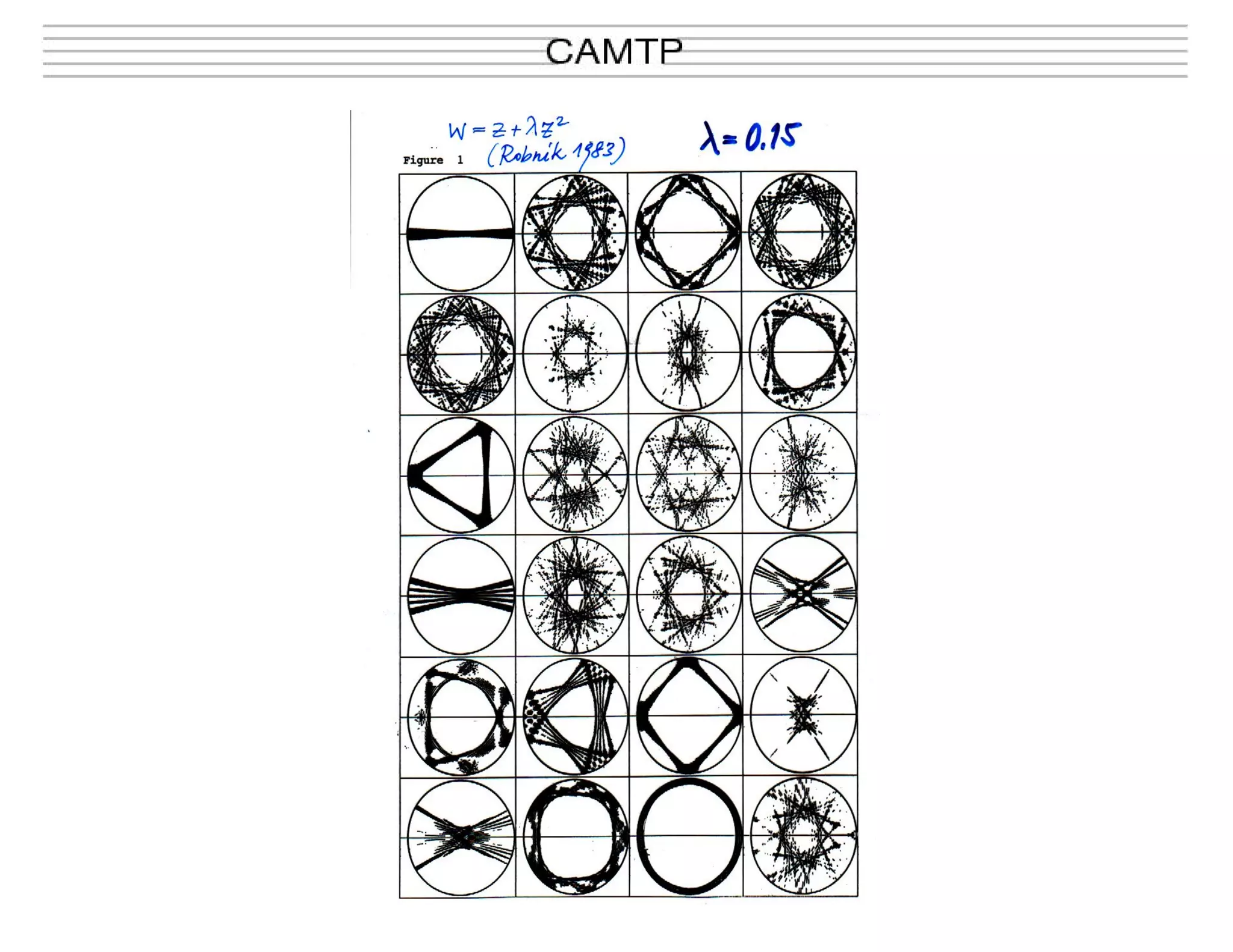
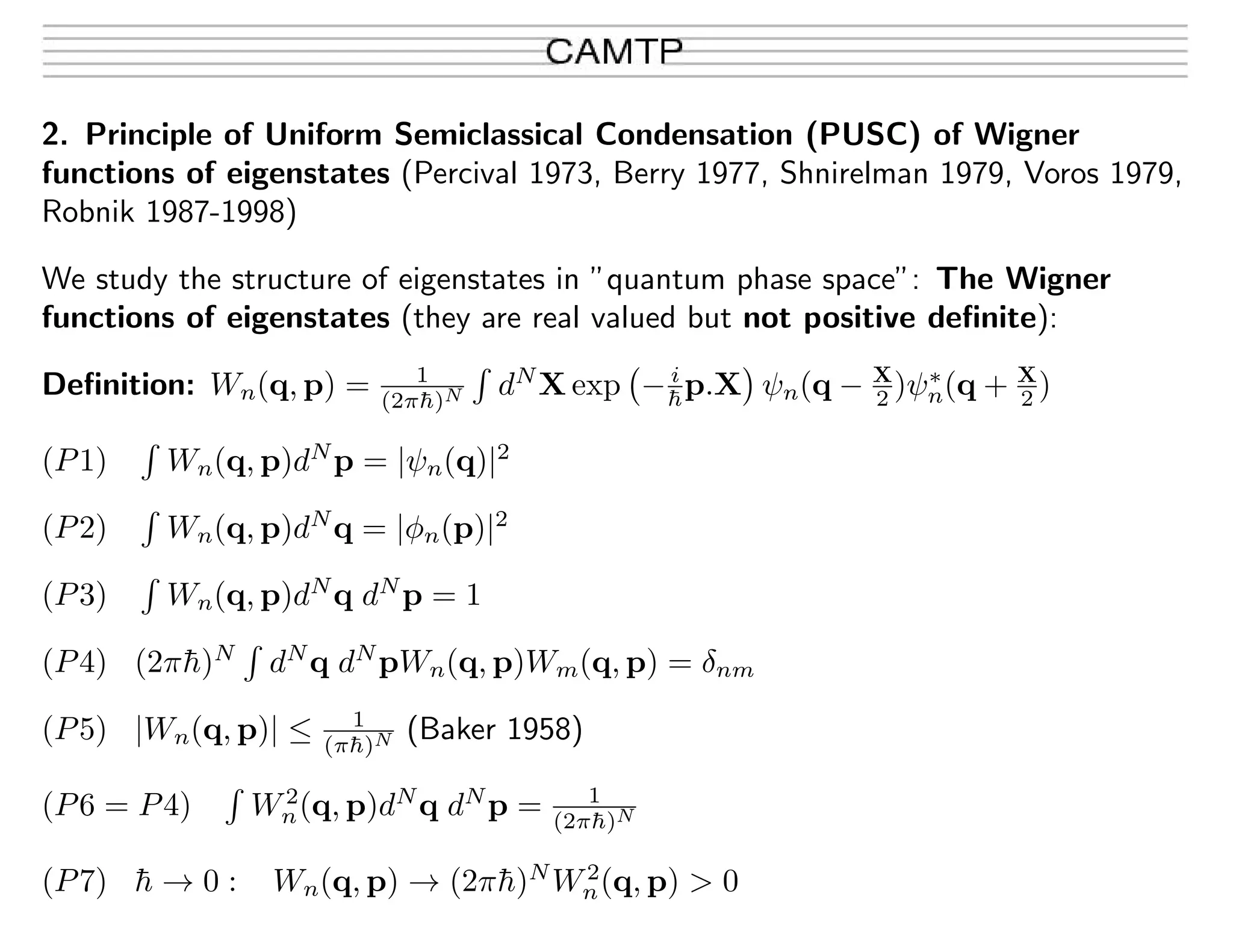

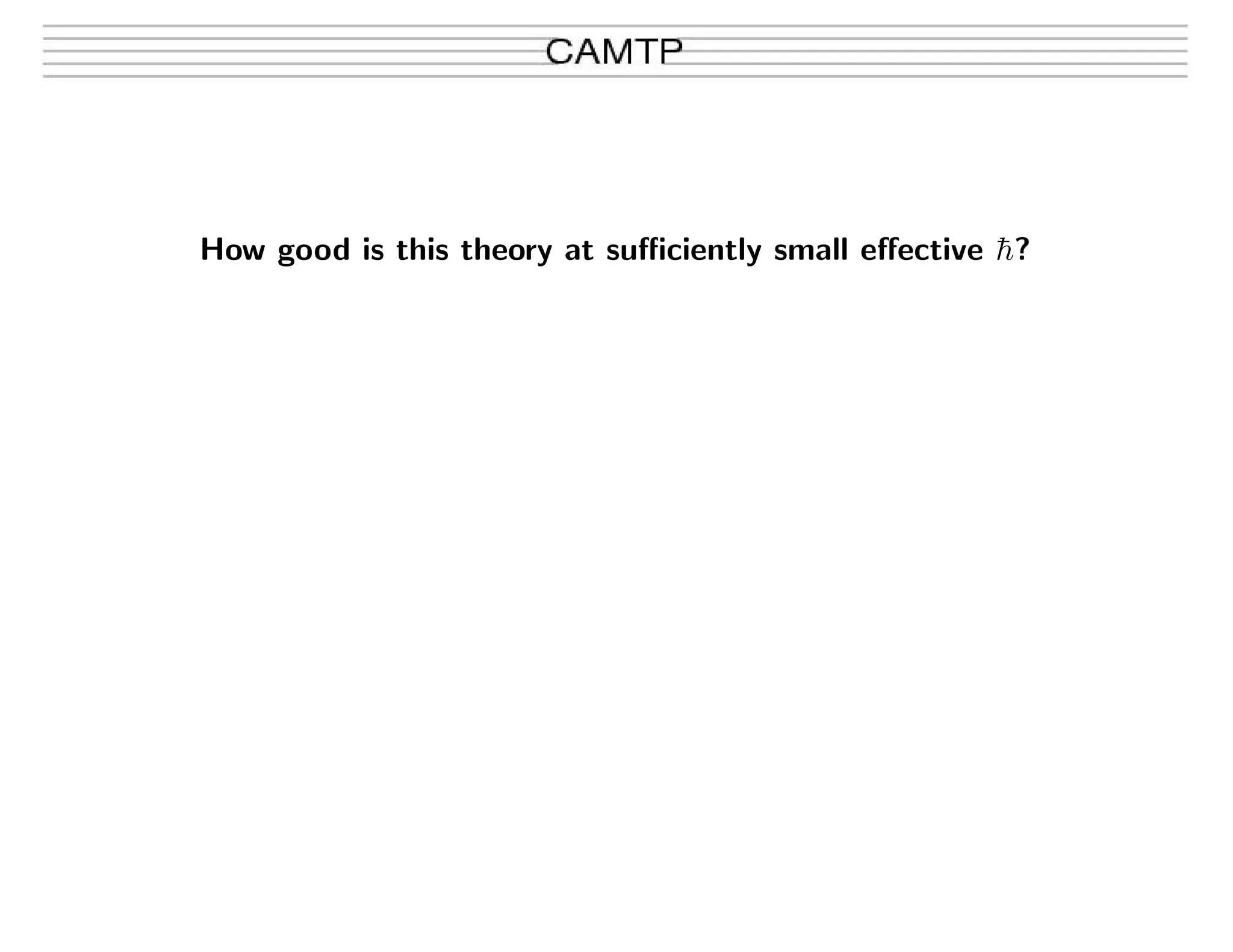
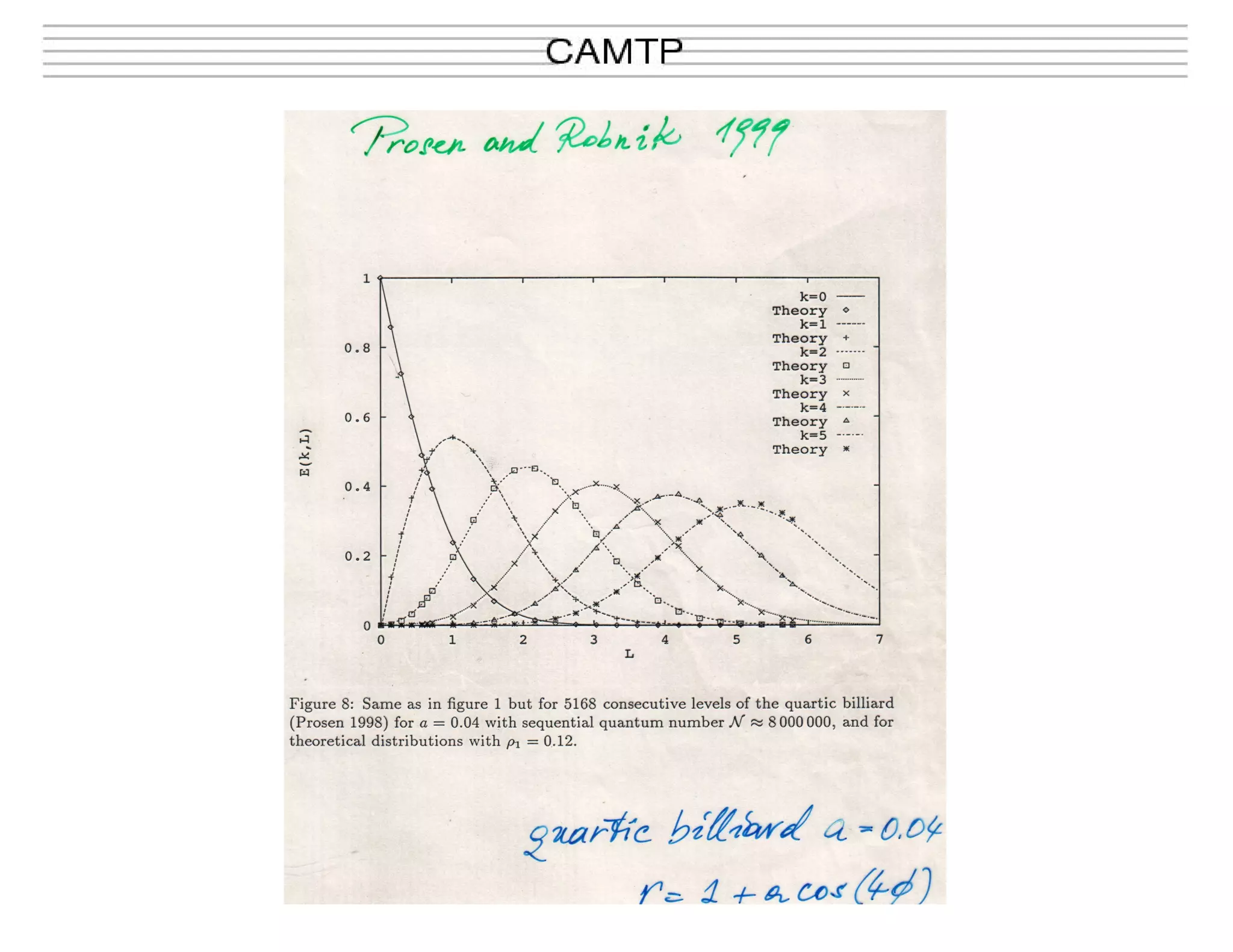
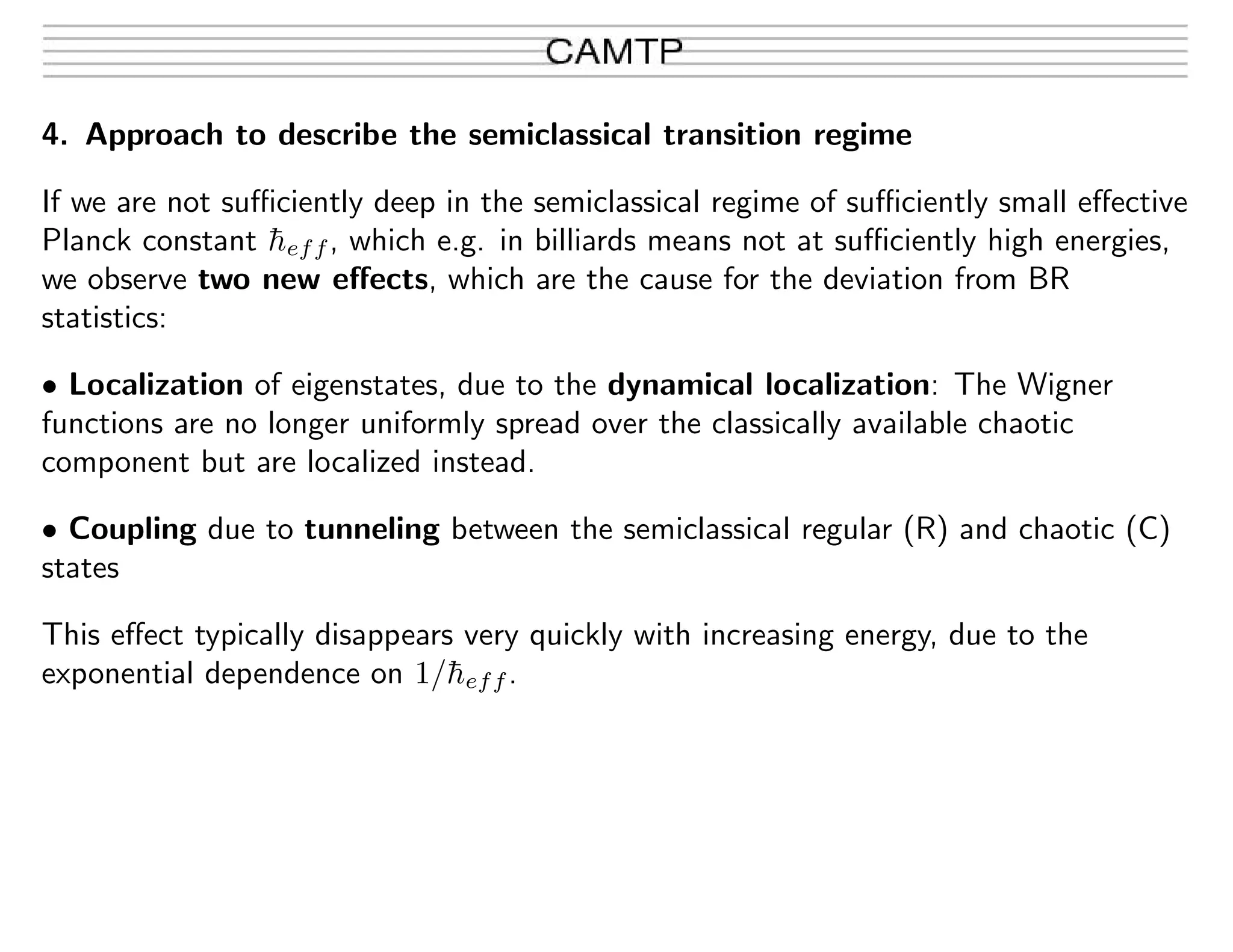
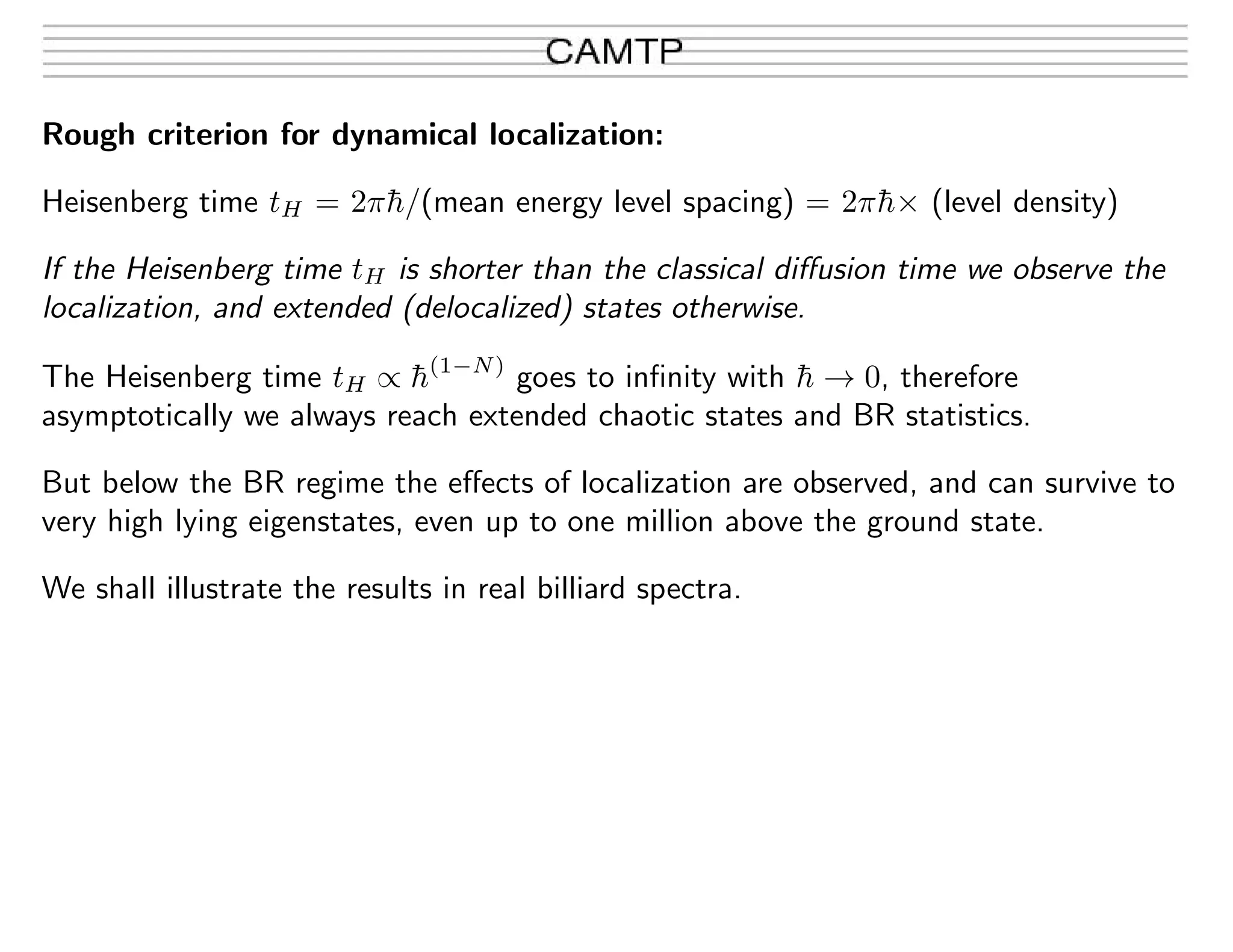
![Dynamically localized chaotic states are semiempirically well described by the
Brody level spacing distribution: (Izrailev 1988,1989, Prosen and Robnik1993/4)
PB(S) = C1Sβ
exp −C2Sβ+1
, FB(S) = 1 − WB(S) = exp −C2Sβ+1
,
where β ∈ [0, 1] and the two parameters C1 and C2 are determined by the two
normalizations < 1 >=< S >= 1, and are given by
C1 = (β + 1)C2, C2 = Γ β+2
β+1
β+1
with Γ(x) being the Gamma function. If we
have extended chaotic states β = 1 and RMT applies, whilst in the strongly localized
regime β = 0 and we have Poissonian statistics. The corresponding gap probability is
EB(S) =
1
(β + 1)Γ β+2
β+1
Q
1
β + 1
, Γ
β + 2
β + 1
S
β+1
Q(α, x) is the incomplete Gamma function: Q(α, x) =
∞
x
tα−1
e−t
dt.](https://image.slidesharecdn.com/como2017robnik-171031164920/75/Quantum-chaos-of-generic-systems-Marko-Robnik-31-2048.jpg)
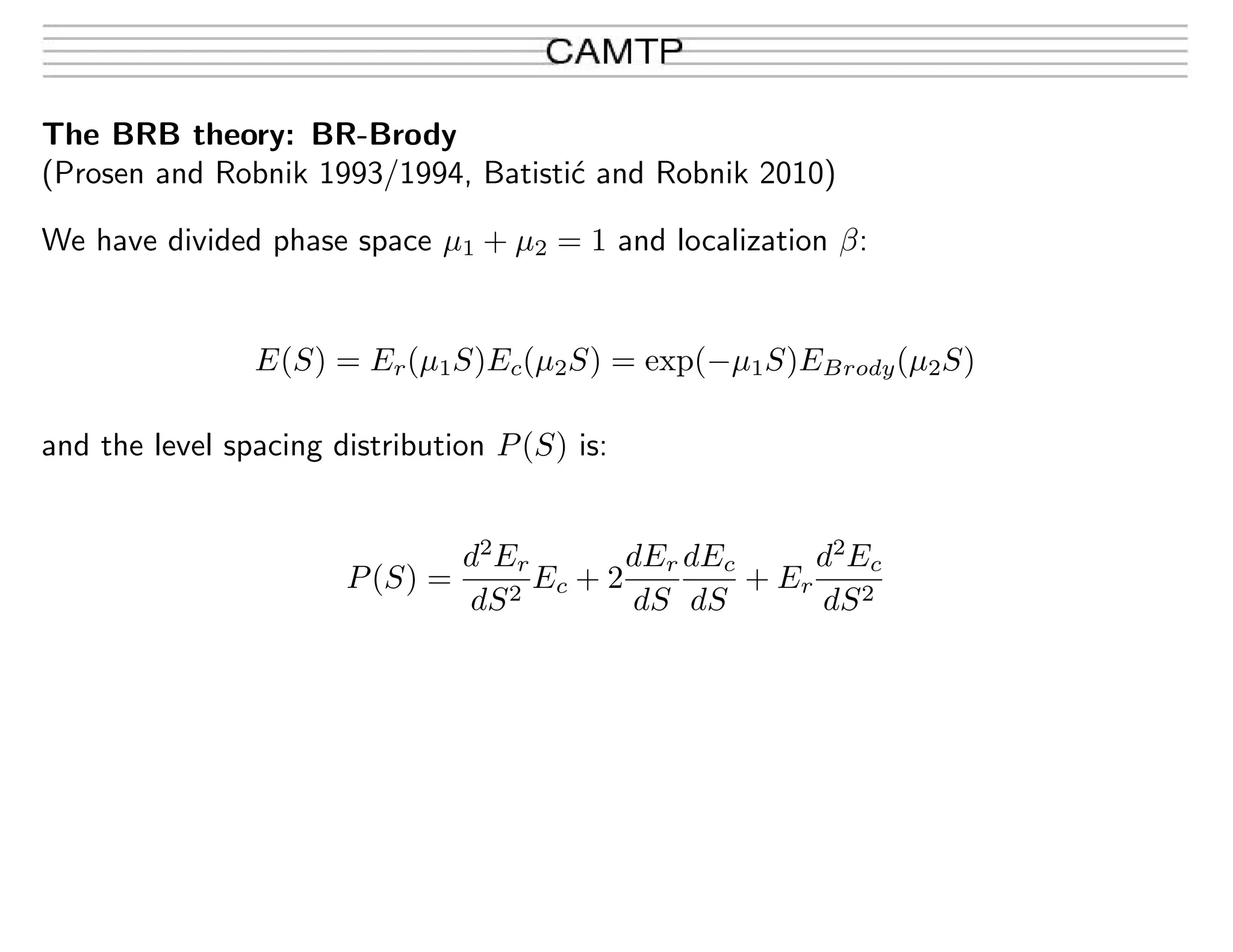
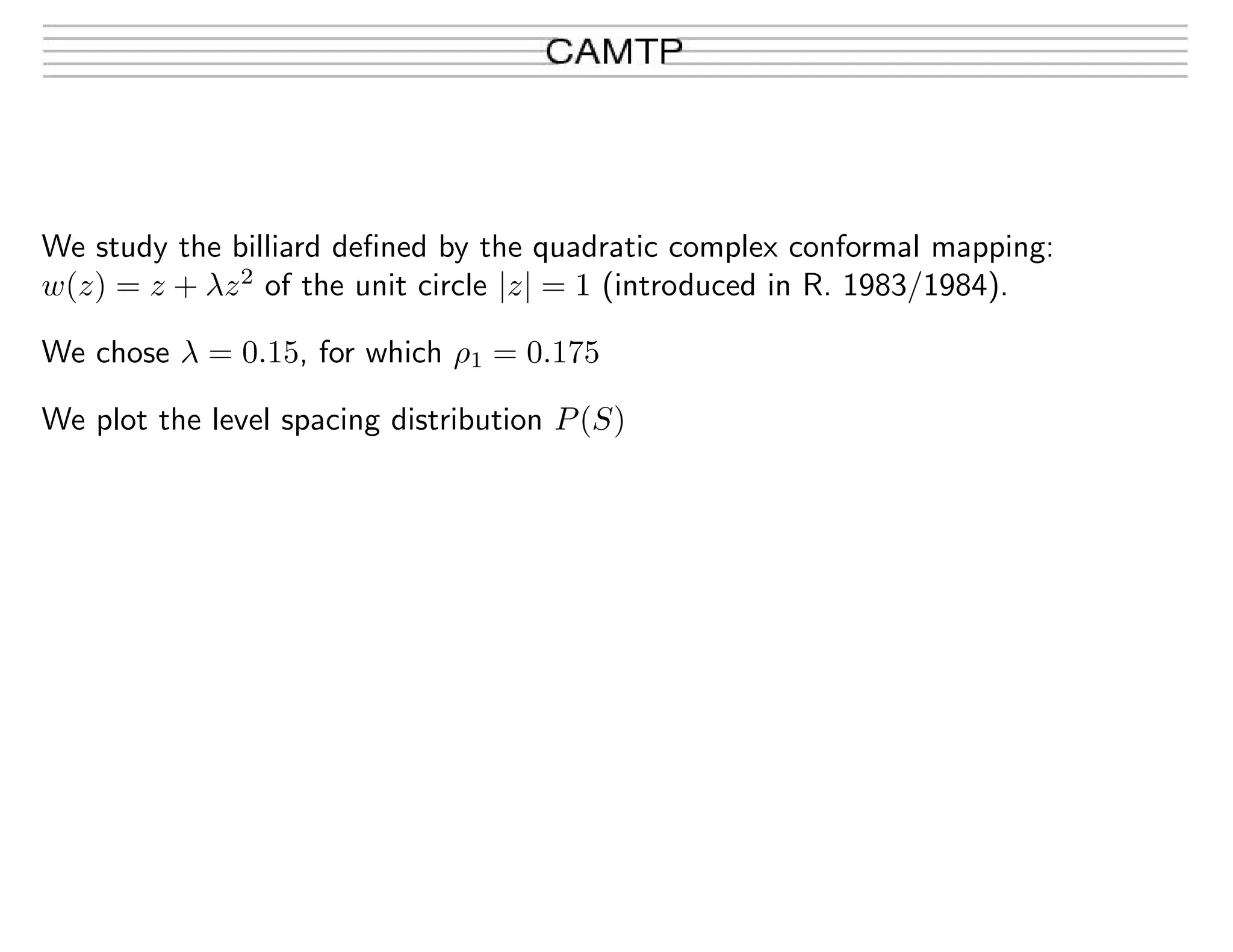
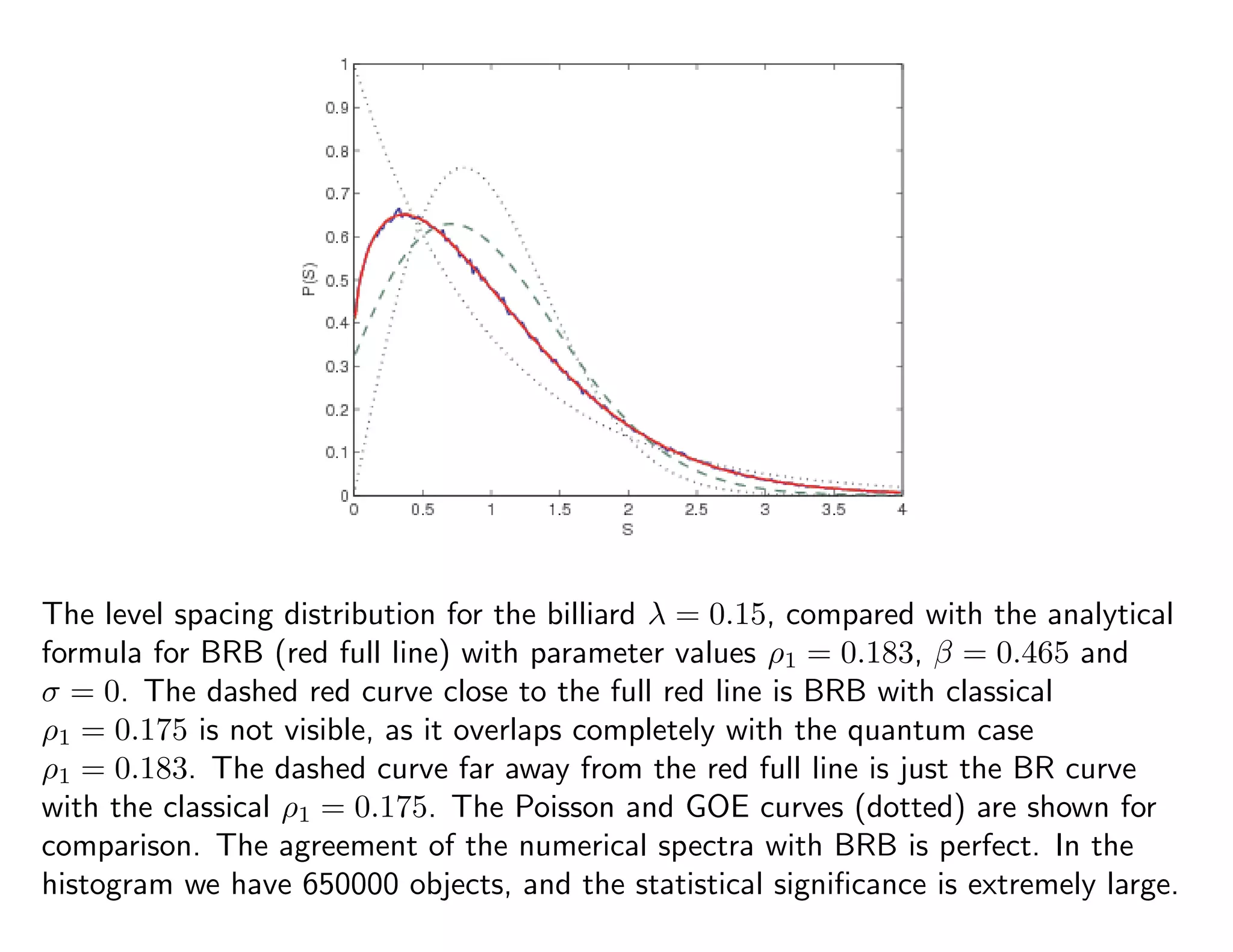
![Discussion and conclusions
• The Principle of Uniform Semiclassical Condensation of Wigner functions of
eigenstates leads to the idea that in the sufficiently deep semiclassical limit the
spectrum of a mixed type system can be described as a statistically independent
superposition of regular and chaotic level sequences.
• As a result of that the E(k, L) probabilities factorize and the level spacings and
other statistics can be calculated in a closed form.
• At lower energies we see quantum or dynamical localization.
• The level spacing distribution of localized chaotic eigenstates is excellently
described by the Brody distribution with β ∈ [0, 1].
• In the mixed type systems regular and chaotic eigenstates can be separated: the
regular obey Poisson, the localized chaotic states obey the Brody.
• The Brody level repulsion exponent β is a function of the localization measure A.](https://image.slidesharecdn.com/como2017robnik-171031164920/75/Quantum-chaos-of-generic-systems-Marko-Robnik-35-2048.jpg)
